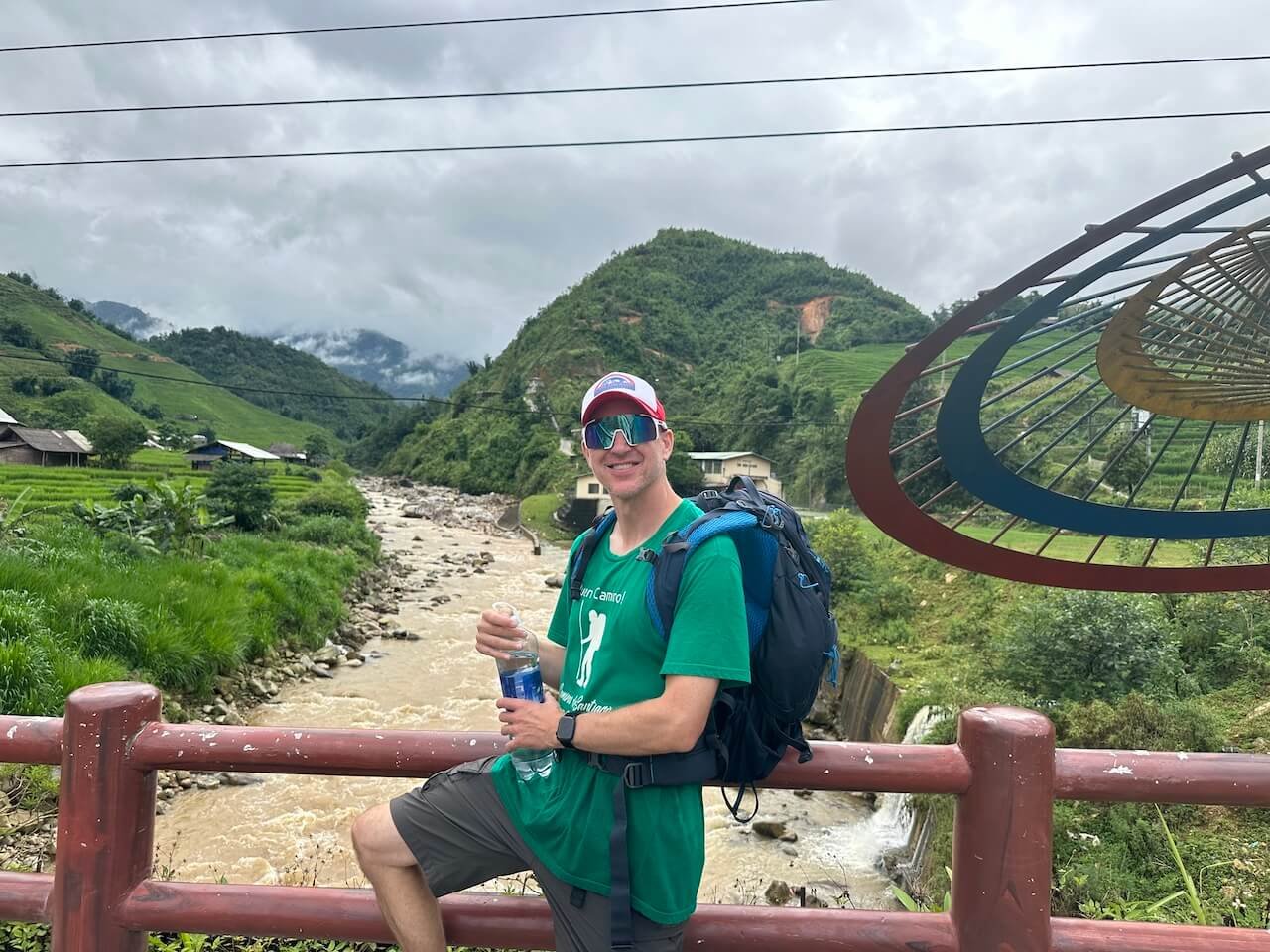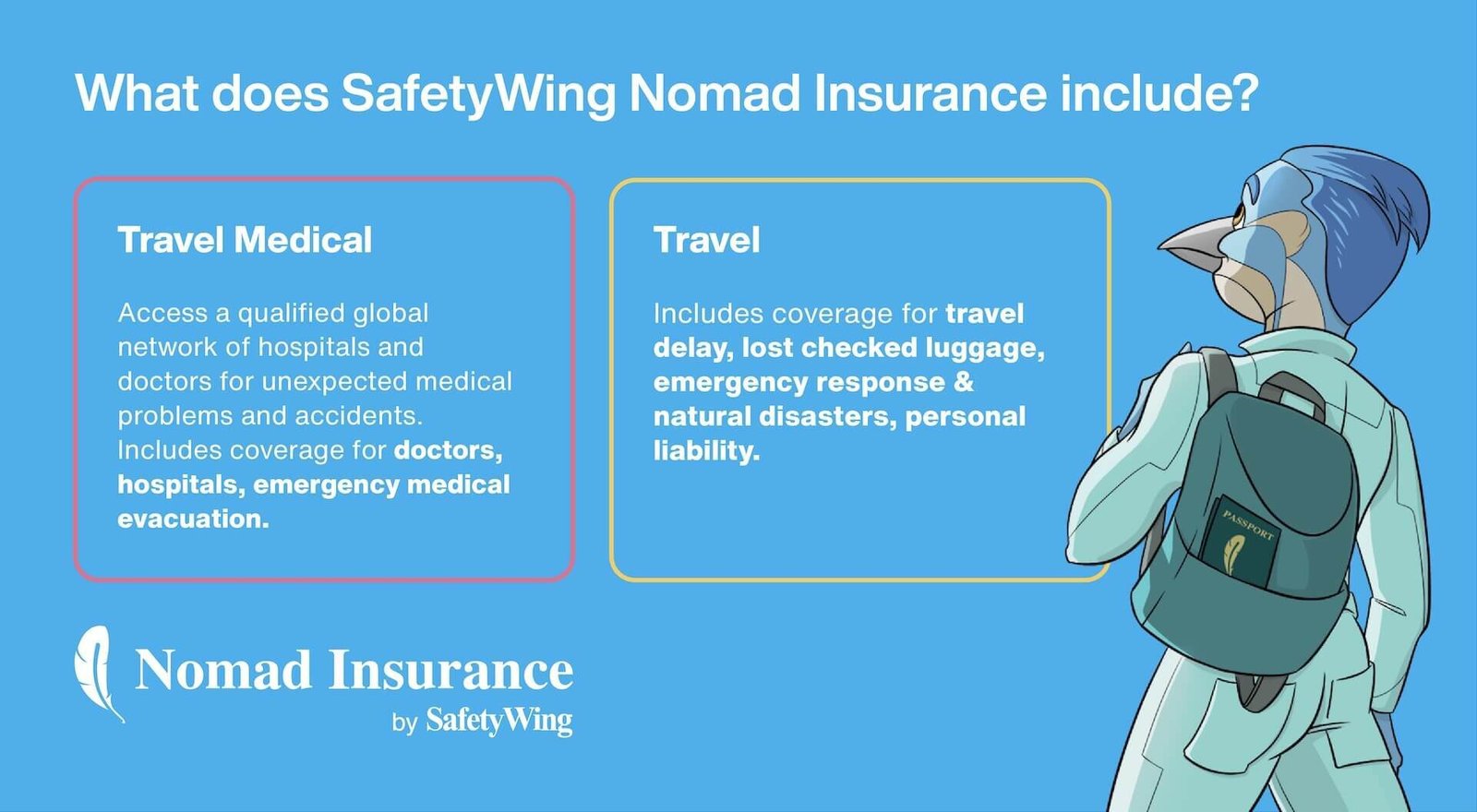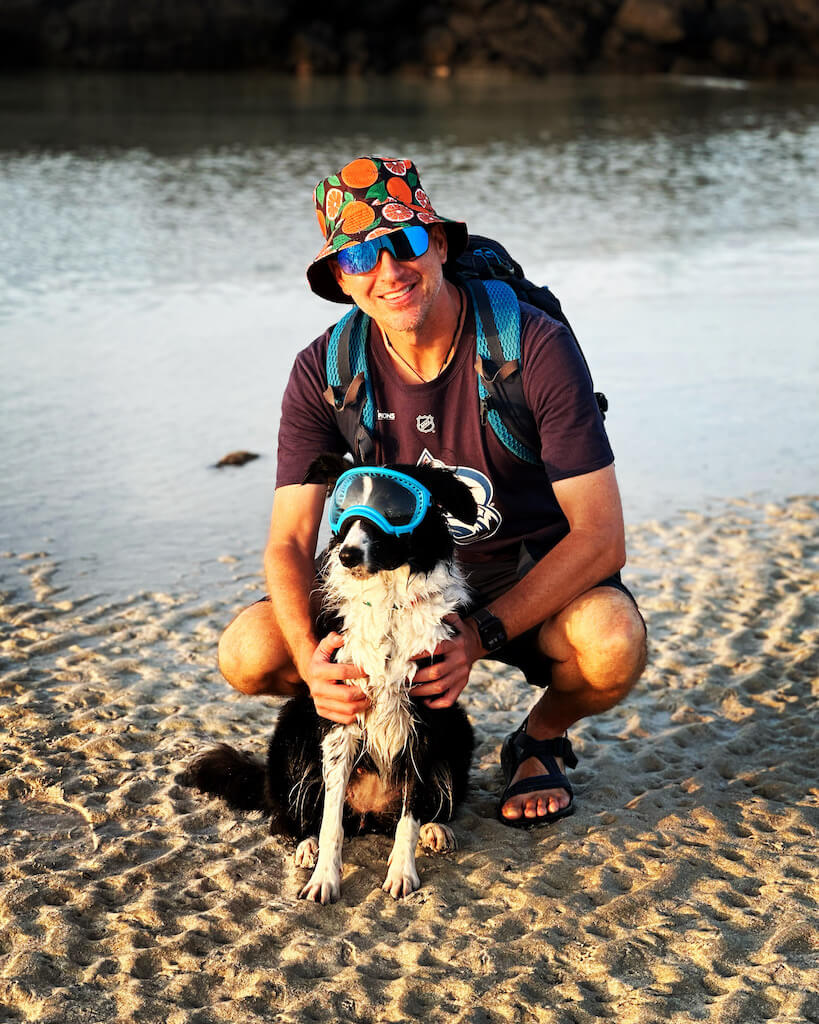Trying to choose between the Annapurna Circuit and Everest Base Camp? This honest, experience-based breakdown compares difficulty, scenery, logistics, and overall vibe to help you pick the Nepal trek that fits your style.
Quick heads up: This post may contain affiliate links to gear, hotels, flights, or experiences I’ve used — or genuinely recommend. If you book through one, I may earn a commission at no extra cost to you. Full disclosure here.
🥾 What’s the Best Trek in Nepal for First-Timers?
If you’re torn between hiking the Annapurna Circuit or trekking to Everest Base Camp, you’re not alone. It’s the most common debate among first-time trekkers heading to Nepal — and one I wrestled with myself back in 2008, zoning out in my Korean classroom while students drew vocabulary words (long story — see my blog’s About page).
The idea had actually started years earlier — not even as a plan, more like a seed — in a shared flat during my ski-bumming, backpacker stint in Queenstown, New Zealand. I was six months into my first yearlong round-the-world trip, just beginning to suspect this whole travel thing might not be a phase after all.
On the wall hung a poster of the Annapurna range, mirrored in a glassy lake — probably Pokhara, though I didn’t know that at the time — with snow-dusted peaks and their names scrawled across the top. I didn’t know anything about it. I just knew it sparked something — the kind of curiosity that gets louder with every new passport stamp.
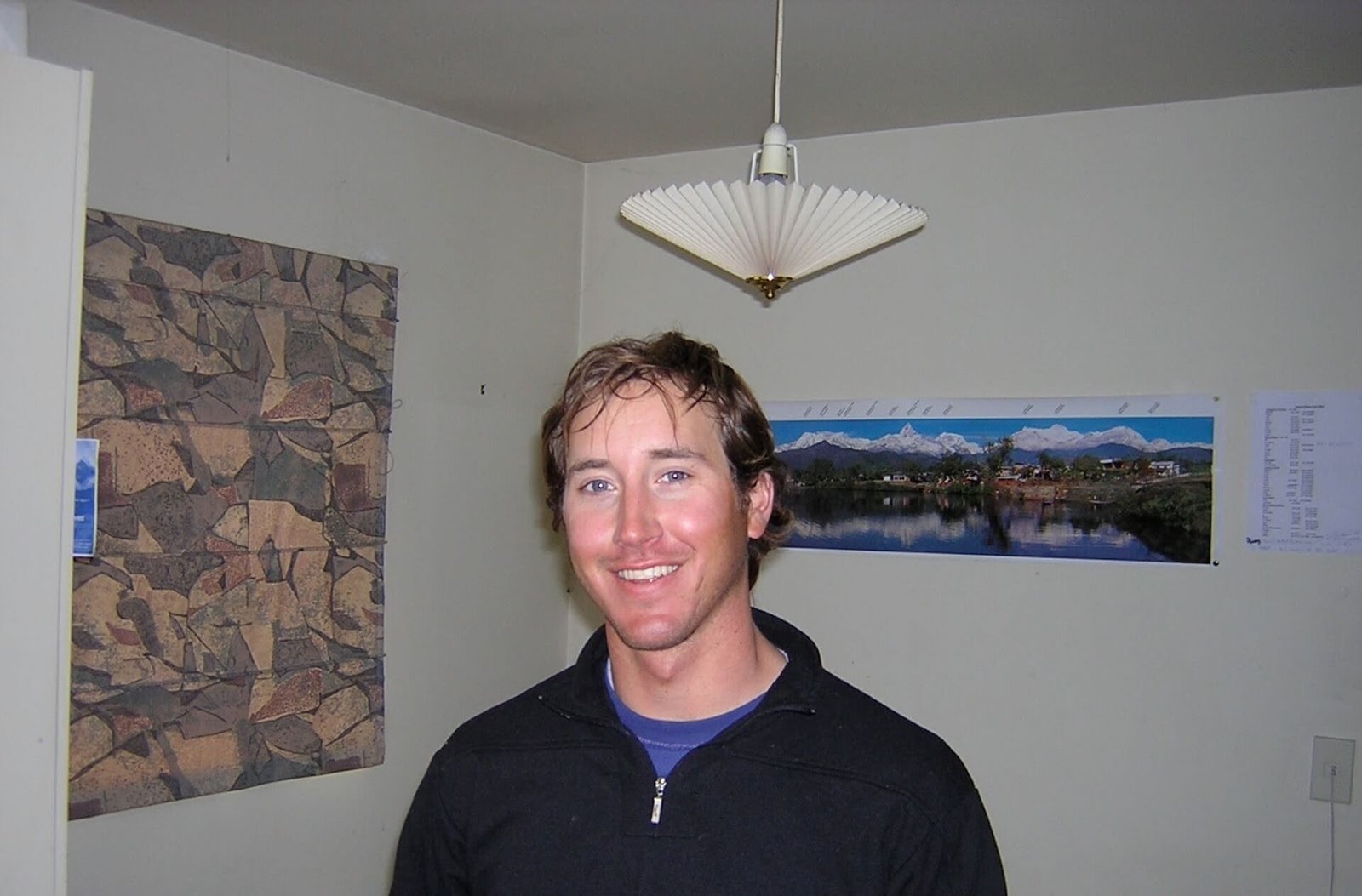
When I left home, my friends and family thought I was scratching the travel itch before “getting back to real life.” In reality, that experience was expanding my bucket list — and that simple poster poured even more into it. I knew I had to get there someday.
Fast-forward about six years, and there I was — dodging hash peddlers and souvenir touts in Thamel, Kathmandu — primed to leave the city and start walking toward that poster. I hadn’t booked anything in advance, just figured I’d sort it out when I got there.
That’s how I ended up signing onto a 20-day Annapurna Circuit trek with one of the first tour sellers who seemed vaguely honest. Luckily, it worked out. But along the trail, I heard plenty of stories from travelers who got overcharged, under-delivered, or flat-out duped.
If you’re planning this trek now, I’m hoping this post helps you take a more responsible approach than my original “wing and a prayer” method. I’ll get into better booking strategies — and trusted tour options — a bit further down.
So, why did I pick Annapurna over Everest in the first place? A few reasons, but the biggest was this: the Annapurna Circuit is a loop. No retracing your steps — just new scenery, new villages, and new conversations every single day.
And it’s not like you miss out on altitude. Crossing Thorong La at 5,416 m gives you the high-mountain payoff — without having to backtrack through the same terrain on the way down. From there, the second half of the trek unfolds more gently: still scenic, but with the pressure off and the altitude fading behind you.
If you’re the kind of reader who enjoys old-school travel diaries, I actually wrote a full Annapurna recap back in 2009 — before I realized you could write a travel blog for people who didn’t already know you by name.
Read the original trail journal →
So, as you’ve probably gathered, this more polished version isn’t coming from someone who just wrapped up the trek last week — it’s a reflection from someone who spent 20 days hiking the full Annapurna Circuit and has since done a deep dive into how both treks operate today.
I’ll help you figure out which route fits your time, fitness, and travel style — whether you’re drawn to Everest’s name recognition or Annapurna’s ever-shifting landscapes. I’ll also share updated advice on guided treks — including what I’d look for now — so you can make a smarter call than my last-minute scramble back in 2008.
So — Annapurna or Everest? Let’s help you pick your path.
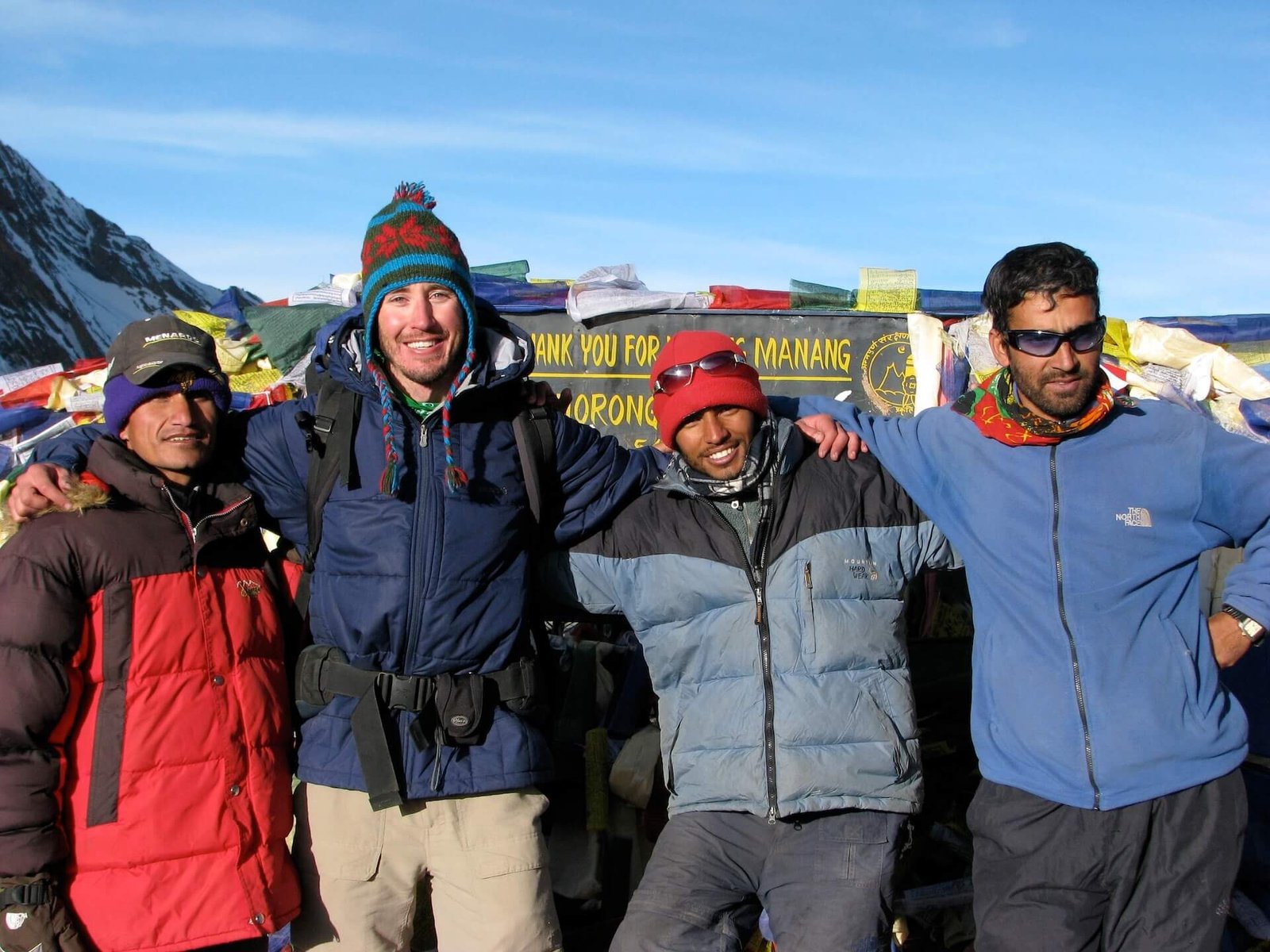
🧭 Annapurna Circuit vs Everest Base Camp: Quick Comparison
Before we get into the nitty-gritty, here’s a side-by-side breakdown of the key differences between Nepal’s two most iconic treks. Whether you’re optimizing for views, variety, or altitude bragging rights, this chart will help you get your bearings.
| Feature | Annapurna Circuit | Everest Base Camp |
|---|---|---|
| Typical Duration | 12–20 days (flexible route options) | 12–14 days (roundtrip from Lukla) |
| Trail Format | Loop or semi-loop (start and finish differ) | Out-and-back |
| Max Altitude | 5,416 m (Thorong La Pass) | 5,364 m (Base Camp) + 5,545 m (Kala Patthar) |
| Difficulty | Moderate–challenging (gradual acclimatization) | Challenging (steeper, faster elevation gain) |
| Scenery | Daily shifts — rice paddies, pine forests, and high-alpine passes | Alpine focus with consistent Everest views |
| Cultural Access | Tibetan-influenced villages and Hindu lowlands | Sherpa culture and Buddhist monasteries |
| Starting Point | Besi Sahar or Jagat (by road) | Flight to Lukla (weather dependent) |
| Permits Needed | ACAP + TIMS | Sagarmatha National Park + Khumbu Pasang Lhamu Permit |
⛰️ How Long Do These Treks Take?
Trek duration isn’t just about distance — it’s about acclimatization, flexibility, and how long you’re game to stay off-grid. Here’s how Annapurna Circuit and Everest Base Camp compare when it comes to time commitment and route variety.
🌀 Annapurna Circuit Duration Options
The full Annapurna Circuit typically takes 18 to 20 days, especially if you’re trekking the traditional route from Besi Sahar to Jomsom or Tatopani with acclimatization days built in. When I booked my trek in 2008, it was advertised as 21 days — I finished in 19, just walking at a steady, comfortable pace.
These days, tour operators often streamline itineraries to 12–15 days. If you’re aiming to cross Nepal’s 5,416-meter Thorong La Pass and complete the full loop, I’d be cautious with anything under 10 days — these often rush key acclimatization days or skip favorite sections.
If you’re short on time or want something less intense, the Annapurna region also offers:
- Circuit-style treks (10–14 days) that use Jeep transport to bypass lower-elevation stretches
- Annapurna Base Camp or Poon Hill treks (5–10 days) based out of Pokhara — great scenery, but not the full “circle the range” experience
- Flexible exit points like Jomsom flights or Jeep rides to cut your walk short
Want the classic “Around Annapurna” version I did? Look for 18–20 day treks that include Thorong La.

🏔️ Everest Base Camp Trek Duration
The classic Everest Base Camp trek takes 12 to 14 days roundtrip, flying into Lukla and following a linear path up through Namche Bazaar, Tengboche, Dingboche, and eventually to Base Camp — then retracing your steps on the way down.
While EBC is more rigid than the Annapurna Circuit, you’ll still find a few variations depending on your time, interest, and budget:
- Standard guided treks run 12–15 days, often with 2 acclimatization days built in
- Helicopter exit upgrades are available from Base Camp or nearby, shaving days off the return
- Add-ons like Gokyo Lakes or Cho La Pass stretch the trip to 16–18 days with big scenery payoffs
Unlike Annapurna, there’s no loop — what you ascend, you descend. That makes time planning less flexible and the second half of the trek feel more repetitive.
If you’re tight on time, some outfitters now offer heli-assisted day tours or hybrid treks, some of which I touch on later in the post.
🥵 Which Trek Is More Difficult?
The Annapurna Circuit and Everest Base Camp treks each bring their own flavor of difficulty — not just in distance or elevation, but in the daily grind of long walking hours, shifting terrain, and altitude adaptation. The key differences? Pace, route style, and how each one handles altitude.
Let’s break down what makes each one hard — and who’s most likely to thrive (or struggle) on the trail.
🌀 Annapurna Circuit Difficulty
I completed the full 20-day Annapurna Circuit in my early 30s, in decent shape — and it was very doable. Long days, yes. Steep sections, sure. But for the most part, it felt like an extended “Stand By Me” walk through shifting landscapes: dirt roads, suspension bridges, narrow trails, and endless valleys that slowly tilted upward.
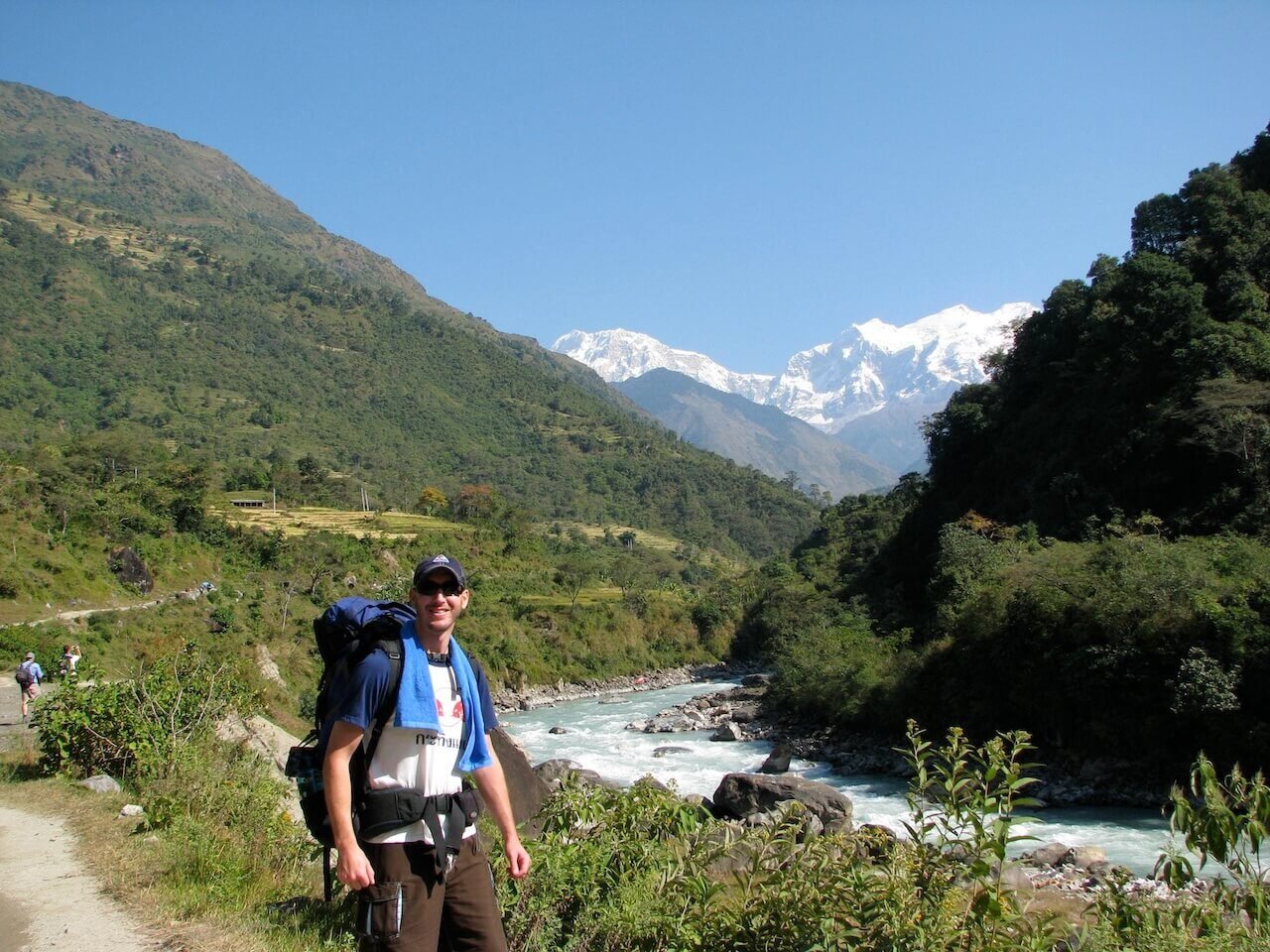
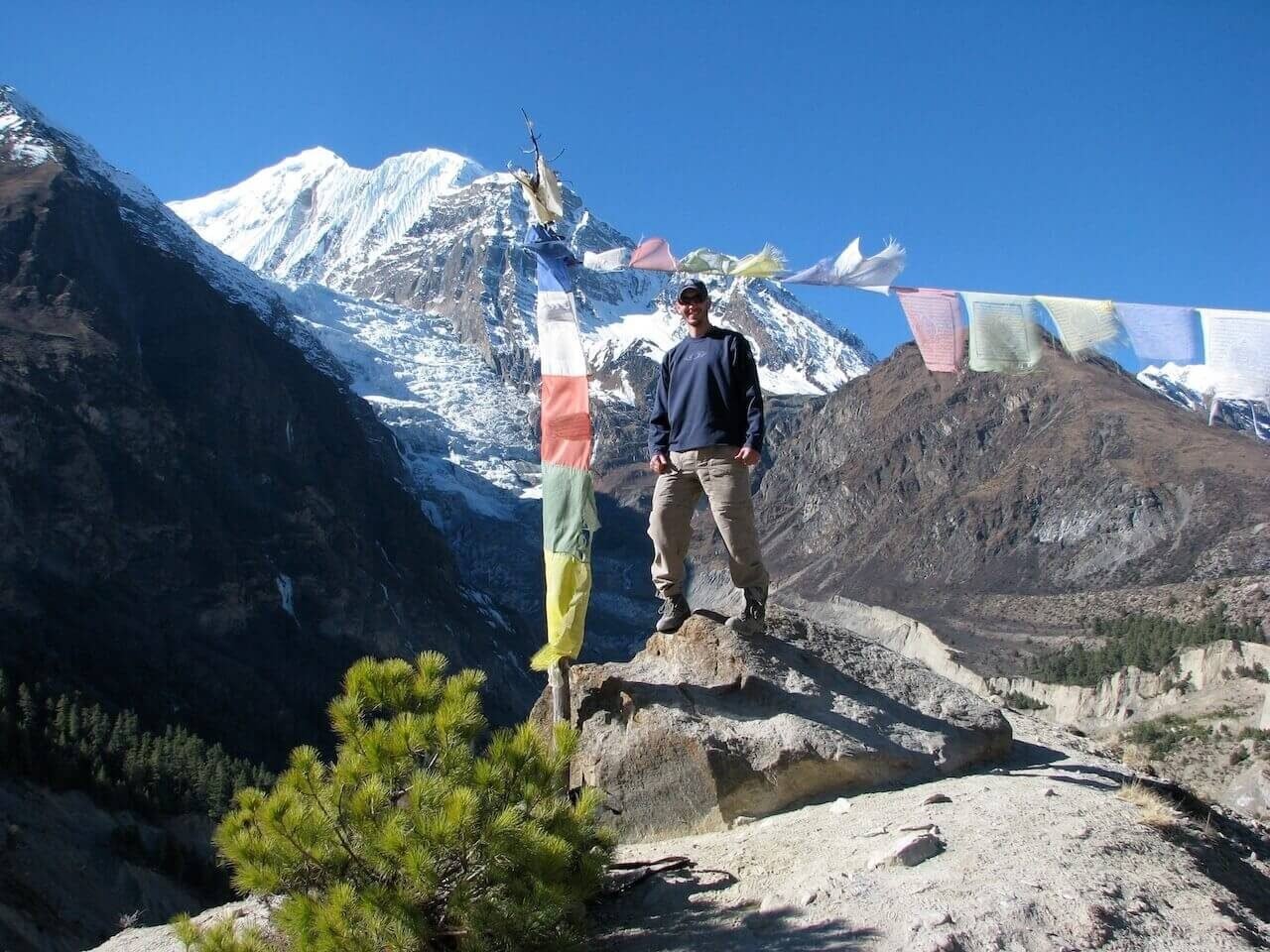
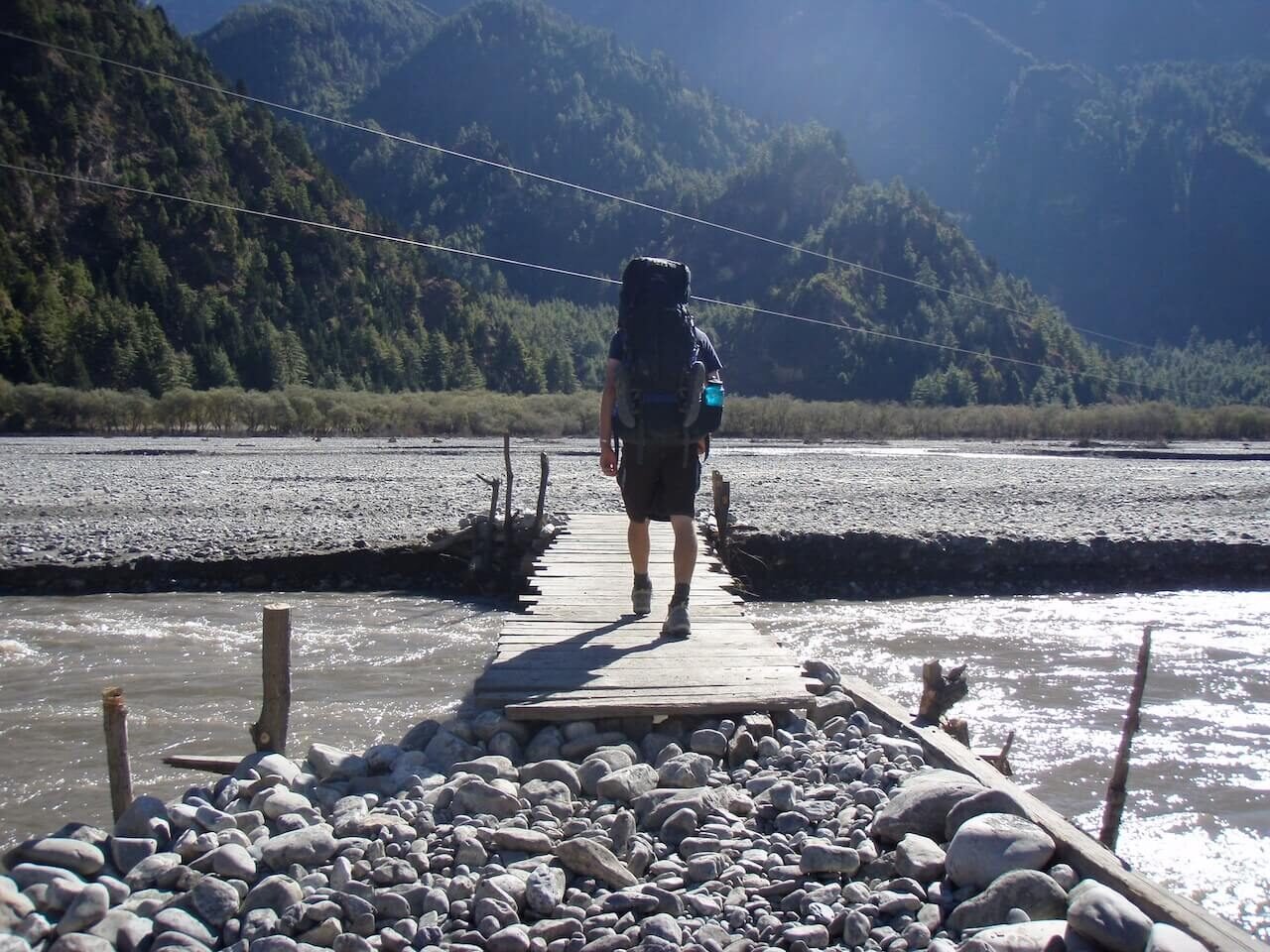
The physical demands weren’t extreme — but they were relentless. You’re walking every day, often 6–8 hours, with your knees, feet, and hips taking the brunt. By the end of the trek, my toes were wrecked. If I were to do it again today, I’d definitely bring trekking poles and maybe a knee brace or two. I also wouldn’t skip some prep hikes beforehand.
That said, I wasn’t the only one pushing limits. I spent most of the trek with a father-son duo from Australia — the dad was in his 60s and trained by doing stair climbs in Perth. He crushed it.
Altitude-wise, the trail climbs gradually, but Thorong La Pass (5,416 m) is no joke. The day before our summit push, I could feel the thin air messing with my head — slow thoughts, creeping headache, general fuzziness. I chugged water, rested early, and somehow woke up strong.
At 3 a.m., I led the way to the top — and stood alone in the sunrise for a while before the others arrived. It’s a memory I’ll never forget.
While there are some shorter versions of the trek, I really think the magic of the full circuit lies in that slow build — and the sense of earning that summit moment. But if 15–20 days of walking doesn’t sound fun, there are shorter Annapurna treks from Pokhara (like Poon Hill or Annapurna Base Camp) that still deliver big scenery with less commitment.
🏔️ Everest Base Camp Difficulty
I haven’t hiked Everest Base Camp myself, so I’m relying on research and conversations over the years — including one from a British friend I met in New Zealand. He wasn’t exactly an athlete and had no issues on the trail. In fact, I’d given him a pair of basic sneakers I didn’t need — and he later told me he wore them all the way to Base Camp.
The classic EBC trek is 12–14 days roundtrip from Lukla, with less flexibility in pacing. You’re starting high (2,860 m) and gaining fast, which makes altitude symptoms more likely — especially if you don’t build in acclimatization days.
The path is steep in sections and mentally repetitive: you go up, hit Base Camp or Kala Patthar (5,545 m), then turn around and walk the same way back. That kind of out-and-back format can be harder on morale than it sounds.
That said, most people who go are fine — especially if you’re reasonably fit, take it slow, and watch for AMS (altitude sickness) symptoms. And if you don’t feel up for the roundtrip, helicopter exit options have become a popular (and pricey) way to shorten the return.
🔁 TL;DR: Which Trek Is Harder?
Here’s the quick version if you’re weighing the physical demands of each route:
- Annapurna Circuit: More gradual ascent, longer days, higher pass. Better for people who want a physical challenge spread out over time.
- Everest Base Camp: Shorter, steeper, faster altitude gain. Great if you’re short on time and want that Everest payoff — but tougher if your body struggles to adjust quickly.
Most healthy, active people can complete either trek — but neither is a “walk in the park.” Training helps. So does gear (walking poles!), patience, and altitude awareness. And if you’re over 40 like me now? Give yourself a little grace — and maybe start taking the stairs more often in the months before you go.
🌄 Scenery & Culture on the Trail: Annapurna vs Everest
You’ll get jaw-dropping Himalayan views on either trek — but the scenery, vibe, and cultural encounters vary more than you might expect. Here’s how the Annapurna Circuit and Everest Base Camp differ when it comes to what you’ll see, who you’ll meet, and what daily life on the trail actually feels like.
🌀 Annapurna Circuit Highlights
From jungle lowlands to high alpine passes, the Annapurna Circuit delivers a dramatic visual and cultural journey — one that ended for me (as it does for most trekkers) in Pokhara, a lakeside haven that felt like a soft landing after weeks on the trail.
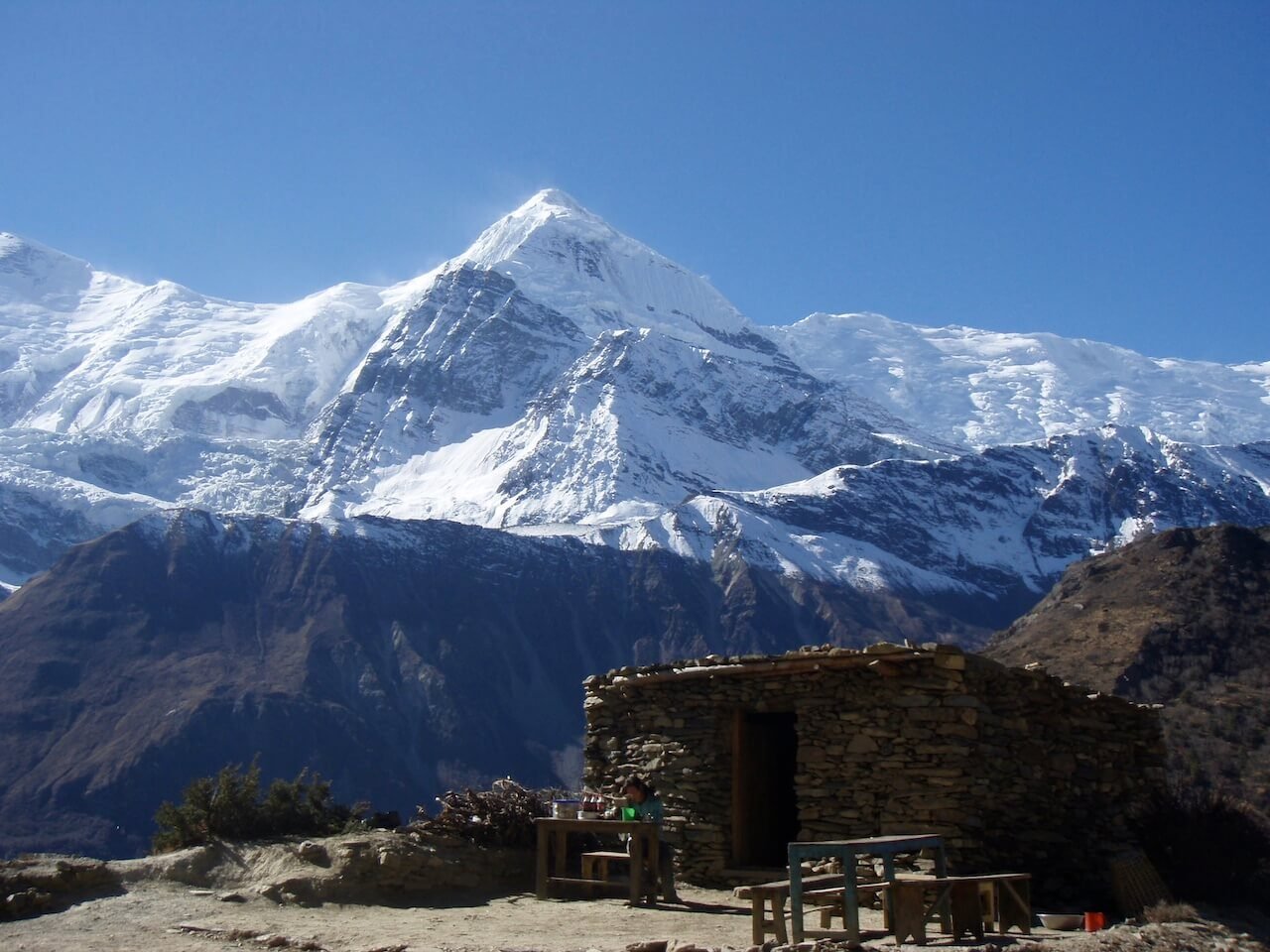
🛖 Village Life & Teahouse Culture
- Sleep in basic, family-run teahouses — no camping gear required
- Fuel up on dal bhat, sip instant coffee at dawn, and enjoy the occasional warm beer
- Shared spaces = shared stories; it’s cozy simplicity with deep connection
Each night, I bunked in teahouses—humble mountain lodges run by local families serving as both home and guesthouse. Expect dal bhat most nights, with pasta, potatoes, or noodles as the occasional treat. Many stops offer Western toilets and hot showers, though the higher you go, the more basic it gets—the frozen-over squat toilet at Thorong La still haunts me as proof that altitude has zero hospitality.
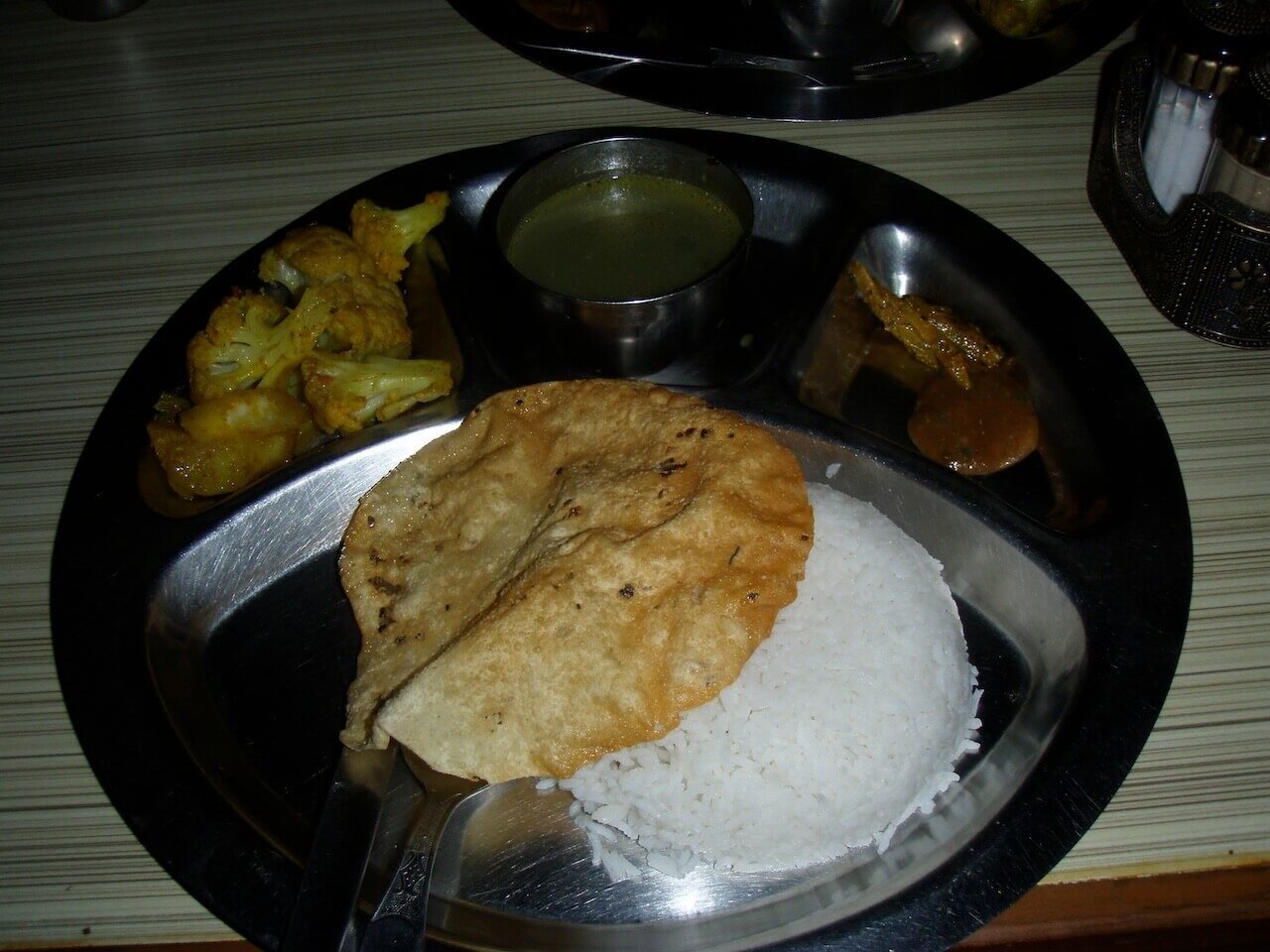
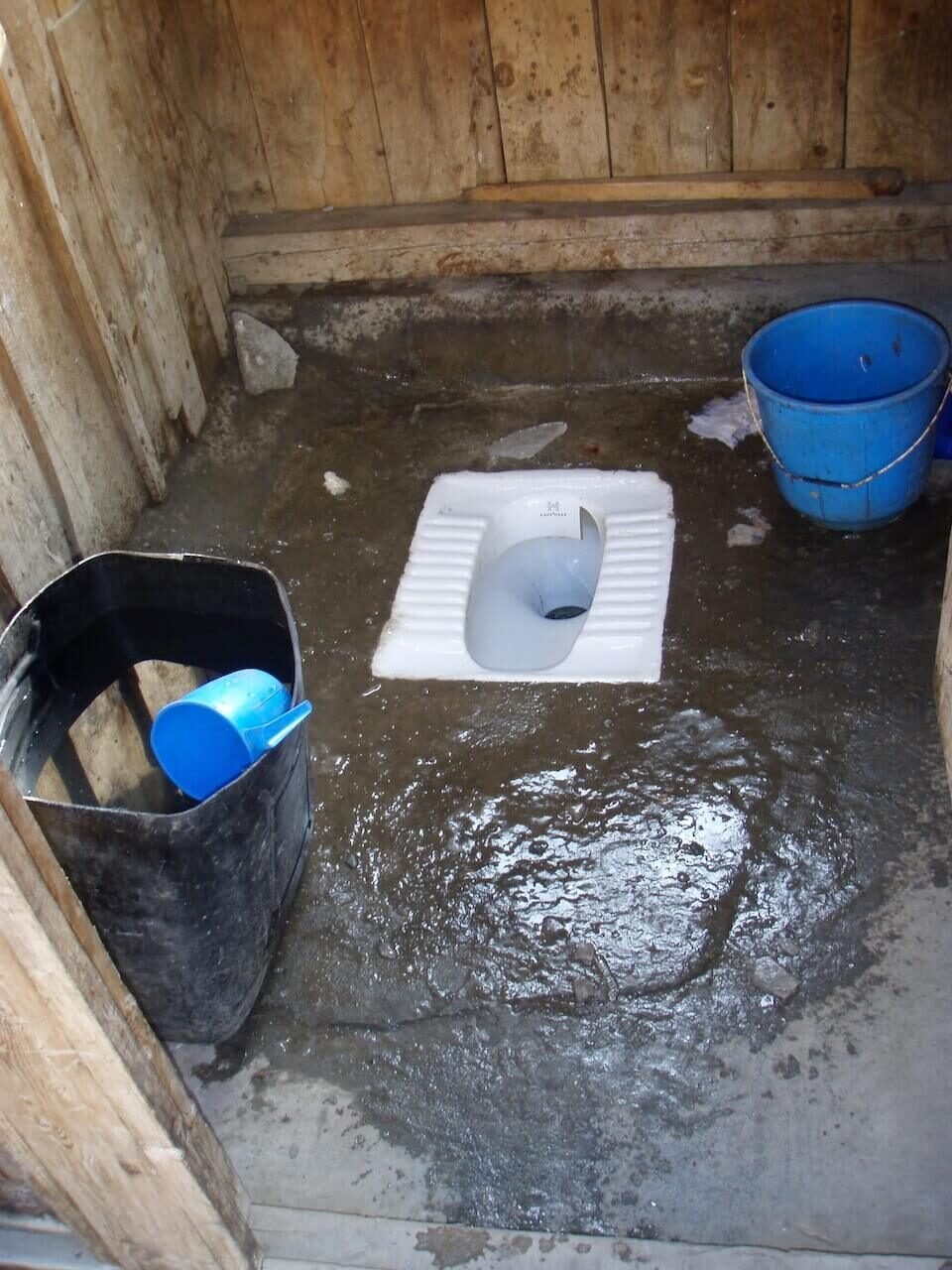
Beds were firm but fine — a major upgrade from tent camping. If you’re not expecting five-star amenities, they’re perfectly cozy, and you’re generally treated like family. Most places offer private rooms unless they’re packed with trekkers.
Beer flows too—mostly Tuborg or Everest, with San Miguel crashing the party every so often. Guides will warn against a drink on the days leading up to Thorong La, but a cheeky beer after a long day never hurt anybody. (That said, I had to quit a drinking a few years later —so maybe trust the guides, not me.)
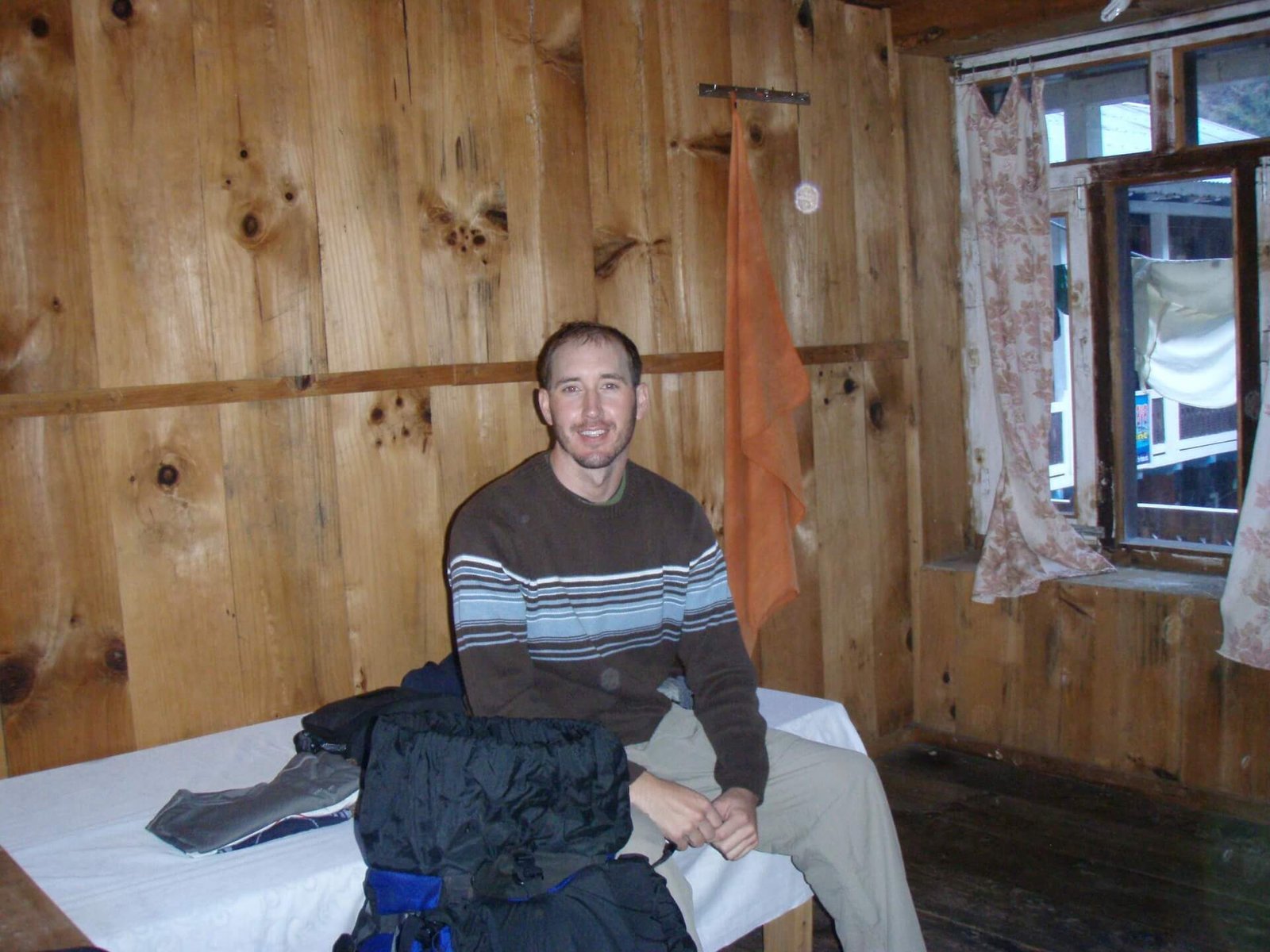
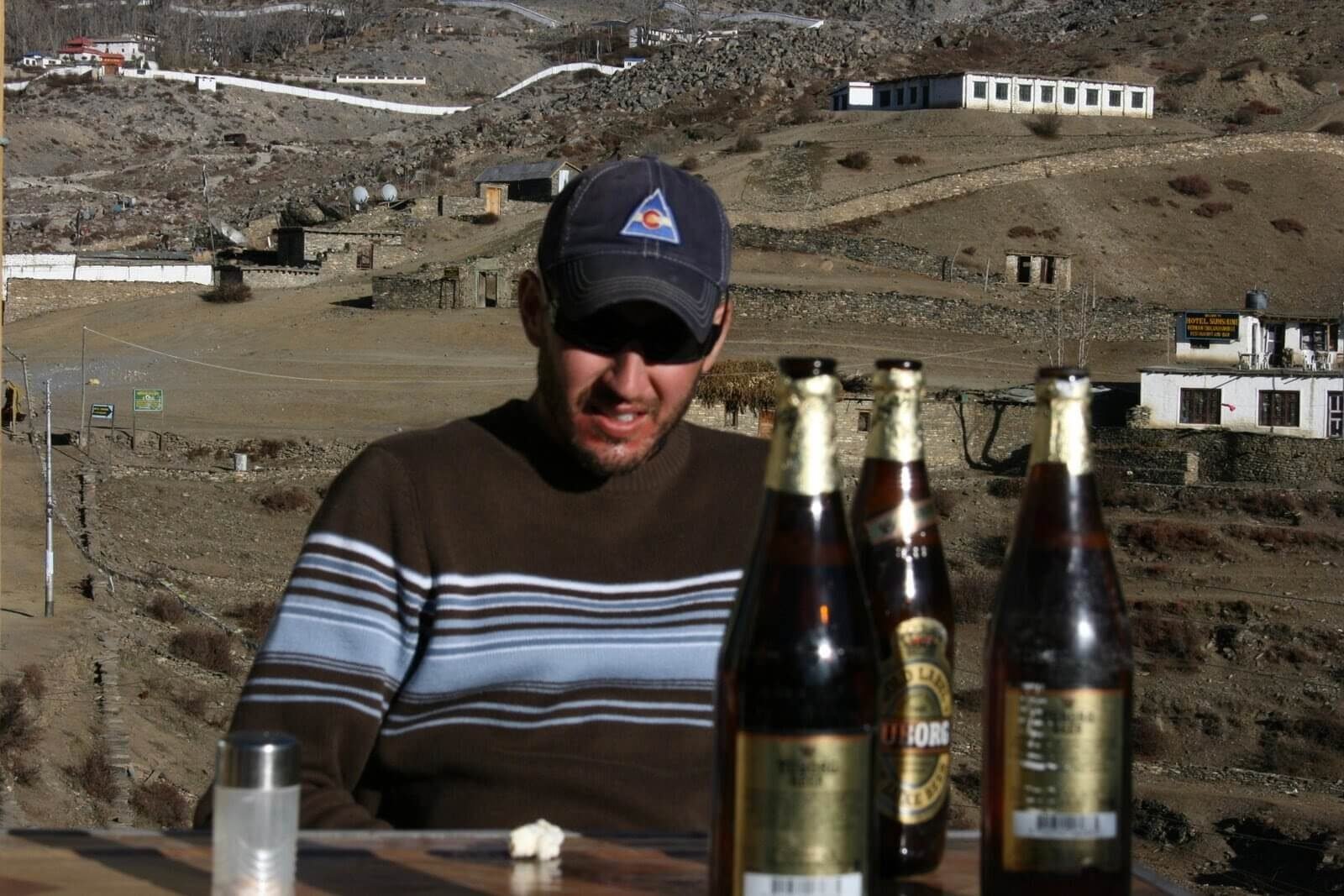
Instant coffee is the norm. No Starbucks in sight, but a frosty-morning Nescafé at 4,000 m hits differently at 4,000 meters on a frosty morning.
These villages run on trekking, but they’re small communities first. Staying in teahouses means entering someone’s home — so respect the space, go easy on the haggling, and remember that hospitality runs deep, even if the walls are thin.
If you stick around long enough, you might find yourself playing footie with local kids or catching a movie in one of the village’s makeshift teahouse theaters — like that chilly Manang night when Seven Years in Tibet played to a bundled-up roomful of trekkers.
🏔️ Trek Highlight: Crossing Thorong La Pass
- A mental and physical summit at 5,416 m — the highest point on the Annapurna Circuit
- A trek that naturally splits into two chapters: build‑up and descent
- Summit morning begins in total darkness with headlamps and layers
- Celebration at the top: prayer flags, tea, elevation triumph — and even a dance or two
- The gradual descent: pace eases, altitude worry fades, and walking feels more relaxed
The trek truly feels like two separate journeys — before Thorong La and after. As we climbed, the air thinned, the days got shorter—not in distance, but in breath. Nights were colder, meals more basic, and even simple tasks like brushing teeth or changing socks felt optional.
We left camp at 3 a.m., bundled in every layer we had, headlamps cutting through the darkness. I was anxious — mild altitude symptoms had nagged me the night before — but somehow I woke strong and led our small group to the summit.
The prayer flags fluttering in the sunrise and the hushed awe was surreal. A few of our guides started singing a celebratory Nepali song, and before long, one of my trekking companions was dancing with them at the summit.
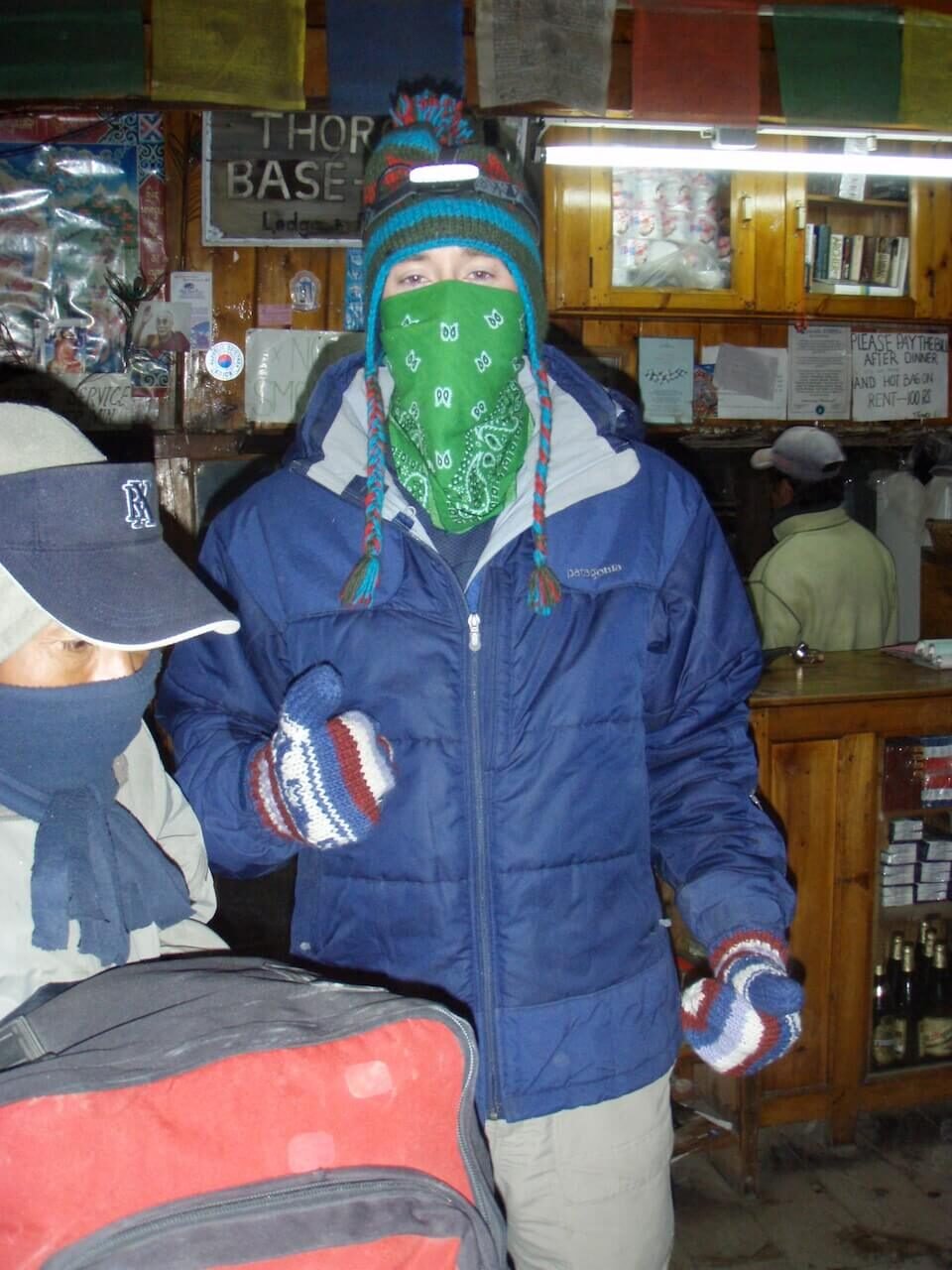
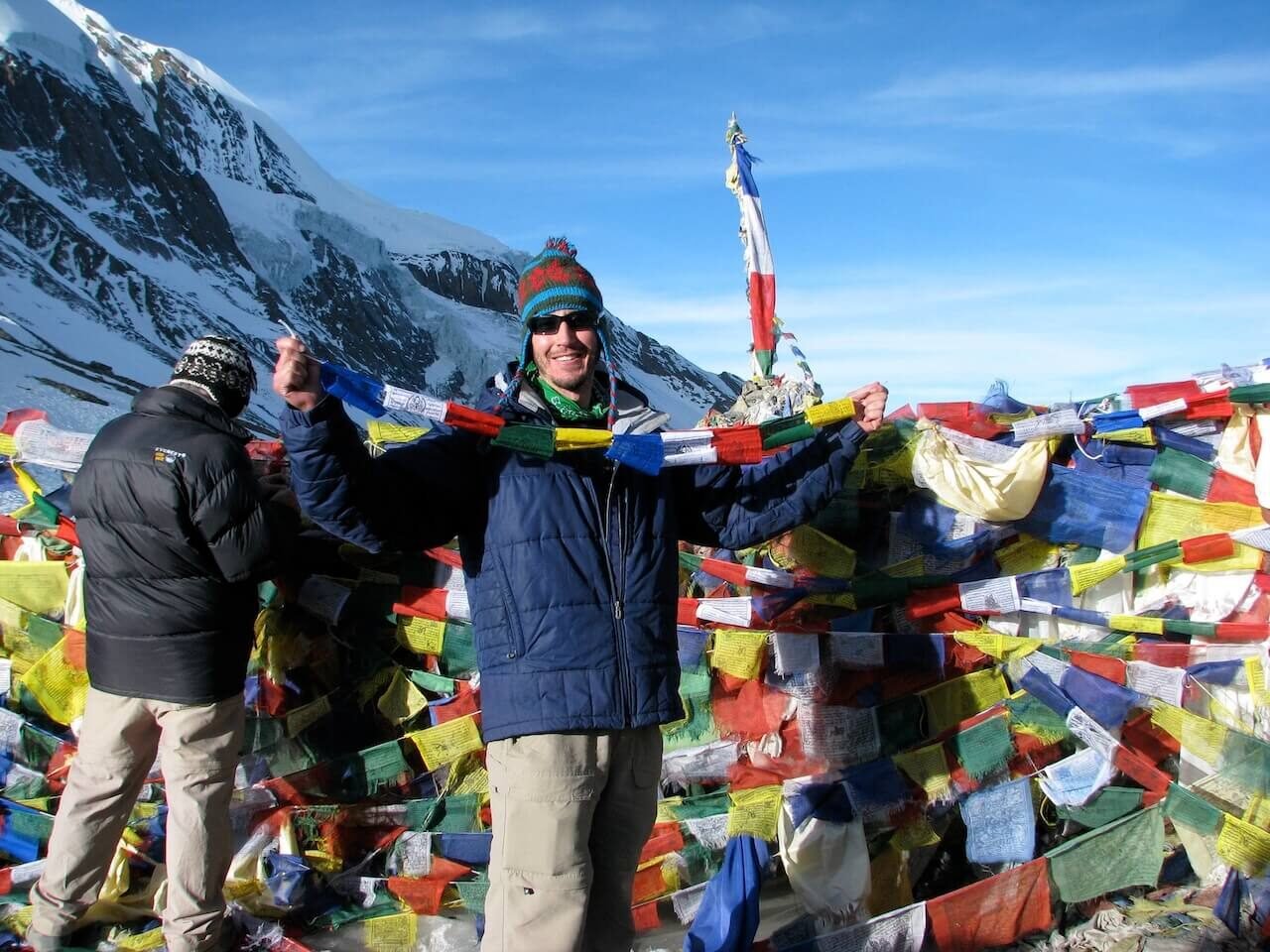
Watch: Here’s a clip of our crew dancing atop Thorong La — we were high on altitude and good vibes.
That moment stayed with me so strongly that I designed my own Annapurna Circuit t-shirt and hoodie to commemorate the trek. You rarely see Annapurna gear in shops, so I made these as a way to carry a bit of Thorong La with me back home.
And then… the descent. The trail remains stunning, but the terrain smooths out. Altitude concerns fade, trail days become less stressful, and you feel civilization creeping back in. Still memorable—just easier.
That night in Muktinath, the party continued: guides included. After weeks of teahouse restraint, we broke loose — dancing, singing, and downing Everest beers. (Anjun ended the night with a tally of 54 empties by morning.)
The grand finale? A legendary chili‑sauce chug‑off against a fellow trekker. Spoiler: I lost. Badly. But the title of “the chili man” stuck — and followed me all the way back to Pokhara, along with some heartburn.
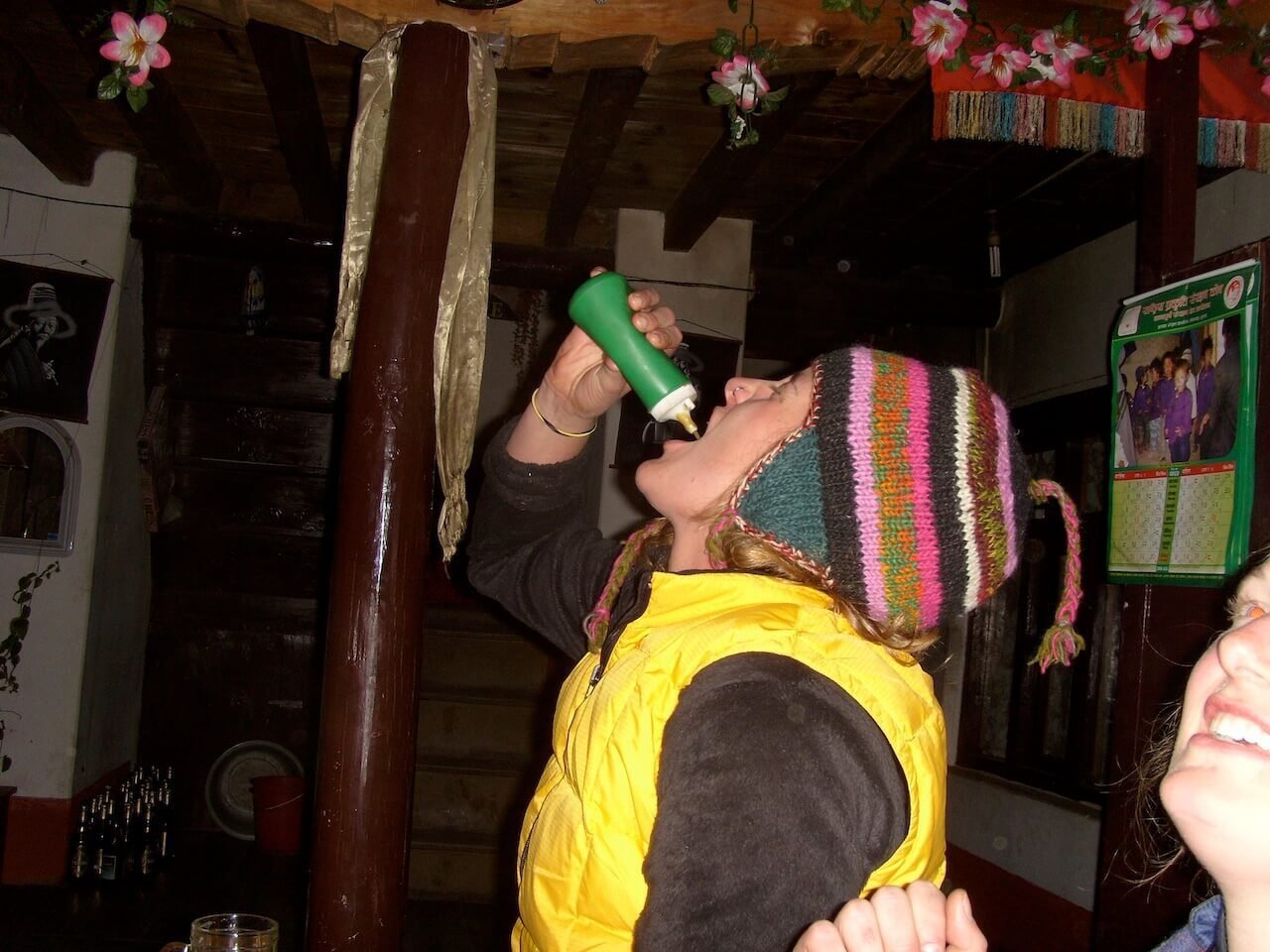
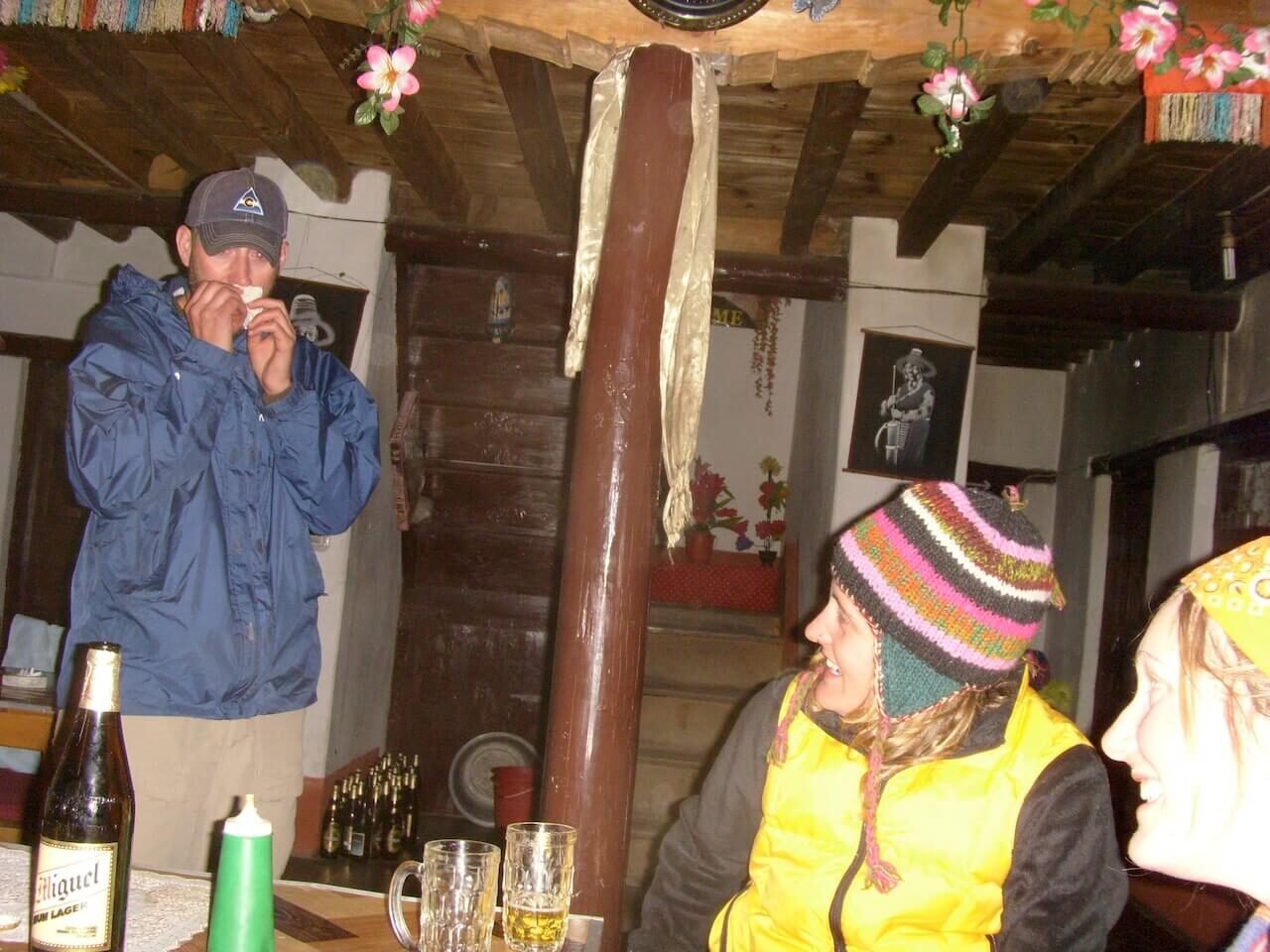
🌍 Cultural Diversity & Scenic Variety
- Trek through shifting cultures — Hindu lowlands to Tibetan-influenced highlands
- See iconic peaks daily: Annapurna I–IV, Dhaulagiri, Gangapurna, Machhapuchhre
- No backtracking — a true circuit with new scenery and villages every day
- Live trails: travel through working communities, not just wilderness
- Moments of daily surprise: glacier views one day, teahouse movie nights the next
If you’re picturing Himalayan trekking as just endless switchbacks and mountain views, the Annapurna Circuit will surprise you. From lush, terraced Hindu villages in the lowlands to Tibetan-style settlements like Manang and Braga higher up, each day brings a new feel — culturally and geographically. You’re not just hiking through landscapes, you’re hiking into them.
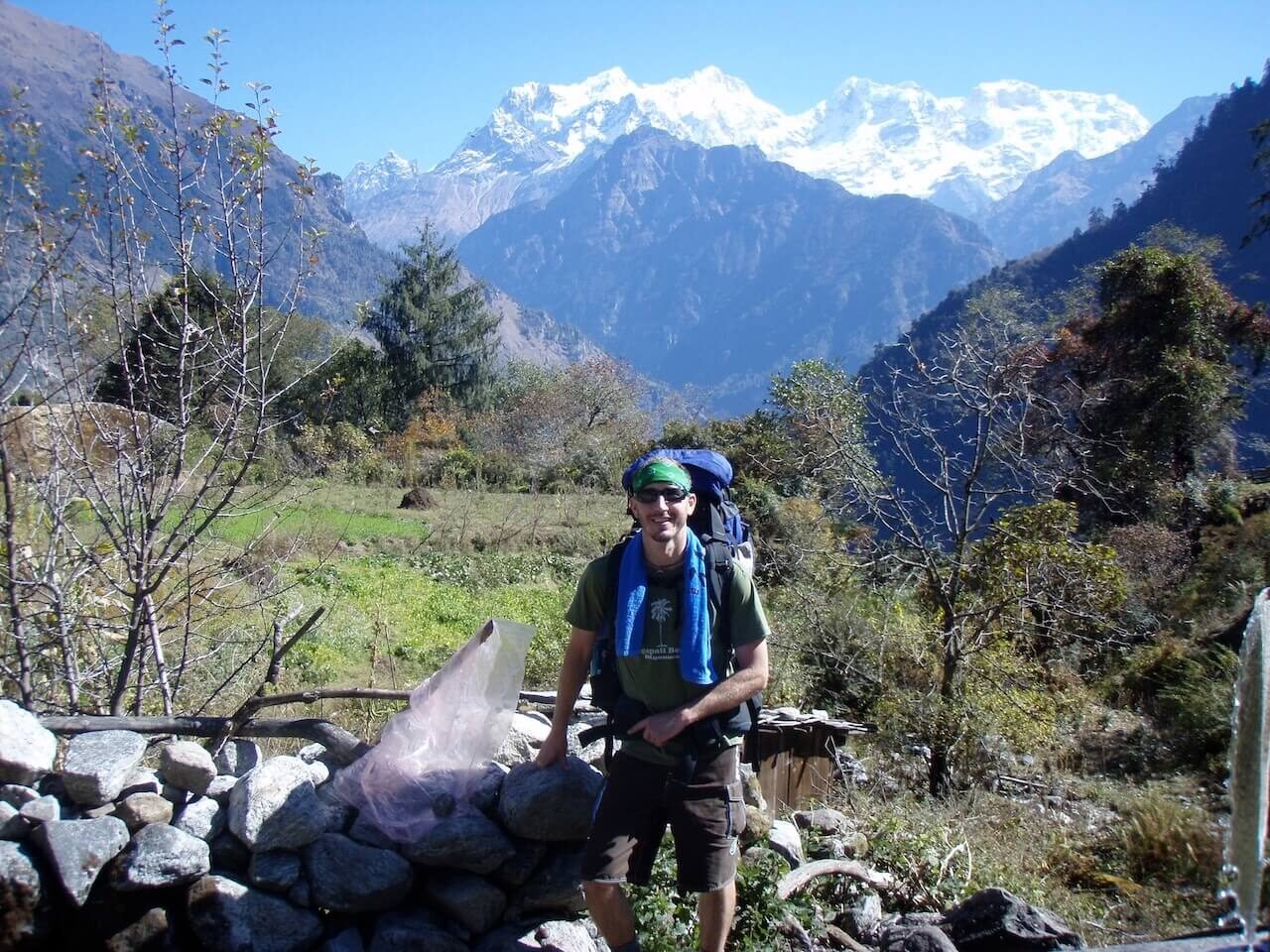
The Annapurna range itself is massive — a collection of giants that shift subtly with every bend in the trail. I’m talking Annapurna I (8,091 m), II (7,937 m), III (7,555 m), IV (7,525 m), Gangapurna (7,454 m), Dhaulagiri (8,172 m), and Machhapuchhre (6,997 m). You don’t need to memorize the names, just know they’re ever-present companions: sometimes distant, sometimes towering right above you. And the best part? No retracing your steps. It’s a true circuit — every day is forward momentum.
That’s one of the big reasons I picked Annapurna over Everest. Yes, EBC offers bragging rights and a shot at Everest views — but it’s an out-and-back route. Annapurna keeps unfolding, village by village, with different faces and flavors along the way. One day you’re walking through a pine forest with yak bells echoing in the distance. The next, you’re sipping chai on a rooftop looking out at a glacier.
Unlike more remote high-altitude routes, Annapurna passes through inhabited terrain nearly every day. These trails are living arteries, connecting locals between villages. For trekkers, that means access to food, shelter, and even the odd movie night in a teahouse lounge.
And it also means you’ll start recognizing faces — fellow travelers, porters, guides — forming a strange, shared rhythm. By the time you’re swapping constipation remedies with a British grandma, you’re part of a temporary community that forms fast and bonds hard, shaped by blisters, altitude, and whatever’s cooking that night.
🧭 Guide Support & Flexible Flow
- Guides handle permits, bookings, meals, transport — so you don’t have to
- Includes teahouse reservations and organized acclimatization buffers
- Option to hire porters for heavy gear—or go self‑sufficient (as I did)
- Guides share local insight and culture — and occasionally lighten the mood
I opted to carry my full pack — no camping gear thanks to teahouse stays. But even as someone comfortable off-grid, organizing permits, lodging availability, trail navigation, and meals above 4,000 m felt like a recipe for stress.
That’s where my guide, Prakash, came in. Yes, he could be overly attentive — treating me like a toddler, fussing over every detail — but he secured lodgings, ensured meals, and kept us safe from altitude and logistical missteps. Meanwhile, DIY trekkers I met often ran into inflated prices or faced full lodges in high-altitude villages. Pre‑planning up there is unpredictable.
But trekking with locals also means shared moments: nighttime card games, beer-fueled laughter, and easy camaraderie. One of my favorite memories was playing — and lightly gambling — on “Pass the Ace” with our Nepali cohorts. Naryn, a retired army vet turned porter for the Aussies, was tough as nails and usually stone-faced beneath his faded Minnesota Vikings beanie. But when he landed a big win and finally cracked a grin, the whole table erupted.
Yes, Prakash wasn’t perfect — sometimes repeating mentors’ lines verbatim — but his steady care kept things safe and smooth. And yes, tipping (~10–15% of trek cost) is customary and greatly appreciated by these families.
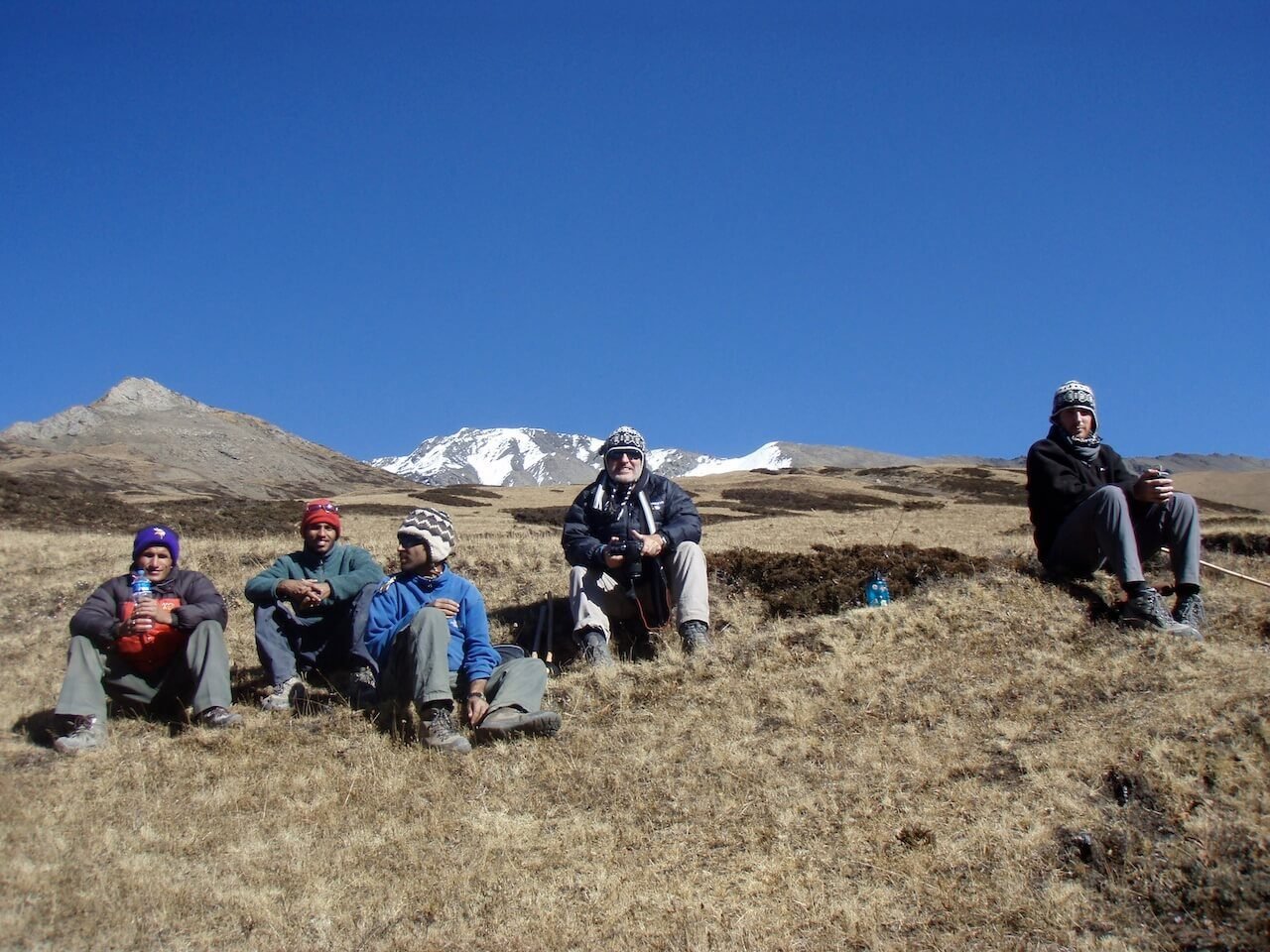
By 2023, guided treks on Annapurna are required by law, making the experience not just practical but essential. With a guide, you hike more and stress less—and connect with this place through people, not just views.
🏔️ Everest Base Camp Highlights
Short and steep, the EBC trek is all about the cliffhanger payoff — that iconic glimpse of Everest from Kala Patthar grips you in a way few places can.
🏔️ Iconic Everest Moment
- Sunrise from Kala Patthar (5,545 m) is the emotional and visual high point
- Glacier‑ringed Base Camp feels like standing at the edge of the world
- The reveal isn’t subtle — it hits hard, fast, and unforgettable
I haven’t hiked EBC myself, but every conversation and report points to one thing: if you’ve ever dreamed of watching Everest light up at dawn, this is where it happens. Kala Patthar doesn’t ease you in — it delivers a jolt of awe, all at once.
🕉️ Sherpa Culture & Monastery Life
- Tengboche and Namche Bazaar anchor a strong Buddhist and Sherpa identity
- Prayer flags, mani walls, and yak trains are part of the daily rhythm
- Less cultural variation than Annapurna, but richer in focused tradition
The Sherpa villages carry a quiet gravity. Tengboche Monastery hosts daily chants that echo through the mountains, while Namche hums with a mix of trekking logistics and local resilience. It’s not a shifting mosaic like Annapurna — it’s deep-rooted, high-altitude culture.
🔁 Trail Rhythm & Elevation Pace
- Begins high (~2,860 m in Lukla) and ascends quickly
- Reaches Base Camp and Kala Patthar in under two weeks
- Linear route: what you climb, you descend — same trail both ways
There’s no warm-up lap here. The EBC trek throws you into the high country early and often. Annapurna gives you time to adjust; Everest expects you to keep up. It’s a front-loaded challenge that demands grit, stamina, and acclimatization discipline.
👣 Crowds & Teahouse Comforts
- One of Nepal’s busiest trails — expect full teahouses and bustling dining rooms
- Comforts are solid: warmer rooms, varied menus, and better infrastructure
- More energy, less intimacy — a social scene driven by Sherpa hospitality
The EBC trail is alive with movement: porters, groups, solo trekkers from every continent. You’ll sleep better and eat better than on more remote routes — but you’ll also share your space. Some find the buzz inspiring. Others long for quieter paths.
🧭 TL;DR: Annapurna vs Everest at a Glance
Short on time or still weighing your options? This side-by-side snapshot breaks down the key differences — from cultural vibes to comfort levels to that all-important mountain view.
| Feature | Annapurna Circuit | Everest Base Camp |
|---|---|---|
| Iconic view | A slow reveal of an entire mountain range | Dramatic Everest view from Kala Patthar at sunrise |
| Culture | Mix of Hindu and Tibetan‑influenced villages | Sherpa‑focused monasteries and Buddhist hubs |
| Trail structure | Long, gradual, loop/circuit route | Short, steep, out‑and‑back route |
| Altitude gain | Spread over weeks — gentler acclimatization | Rapid ascent — higher altitude risk |
| Crowds & comfort | More solitude, rustic charm | Busy teahouses, more developed infrastructure |
👉 Ready to book? Jump to Tour Recommendations
🛣️ Trail Logistics & Getting There
Getting to the trailhead is its own adventure in Nepal. Whether you’re bouncing in a jeep toward Besisahar or holding your breath on a flight into Lukla, the journey before the journey sets the tone. This section breaks down transportation options, infrastructure quirks, and how modernization is reshaping both treks.
🌀 Getting to Annapurna Circuit
The Annapurna Circuit isn’t flown into—it’s reached by overland journey and trailhead trekking. Most serious trekkers start in Besisahar and finish in places like Jomsom, Tatopani, or Pokhara, depending on their chosen route and itinerary. Most tours include the overland transfer in their package.
🚐 Starting the Trek: Kathmandu → Besisahar
I took a tourist bus from Kathmandu to Besisahar. Picture long, bumpy roads—not quite the comfort of a seat in Southeast Asia, China, or Korea—but authentic. Expect a dirty, sweaty 6–8 hour ride through mountain valleys. Not glamorous, but it sets the tone.
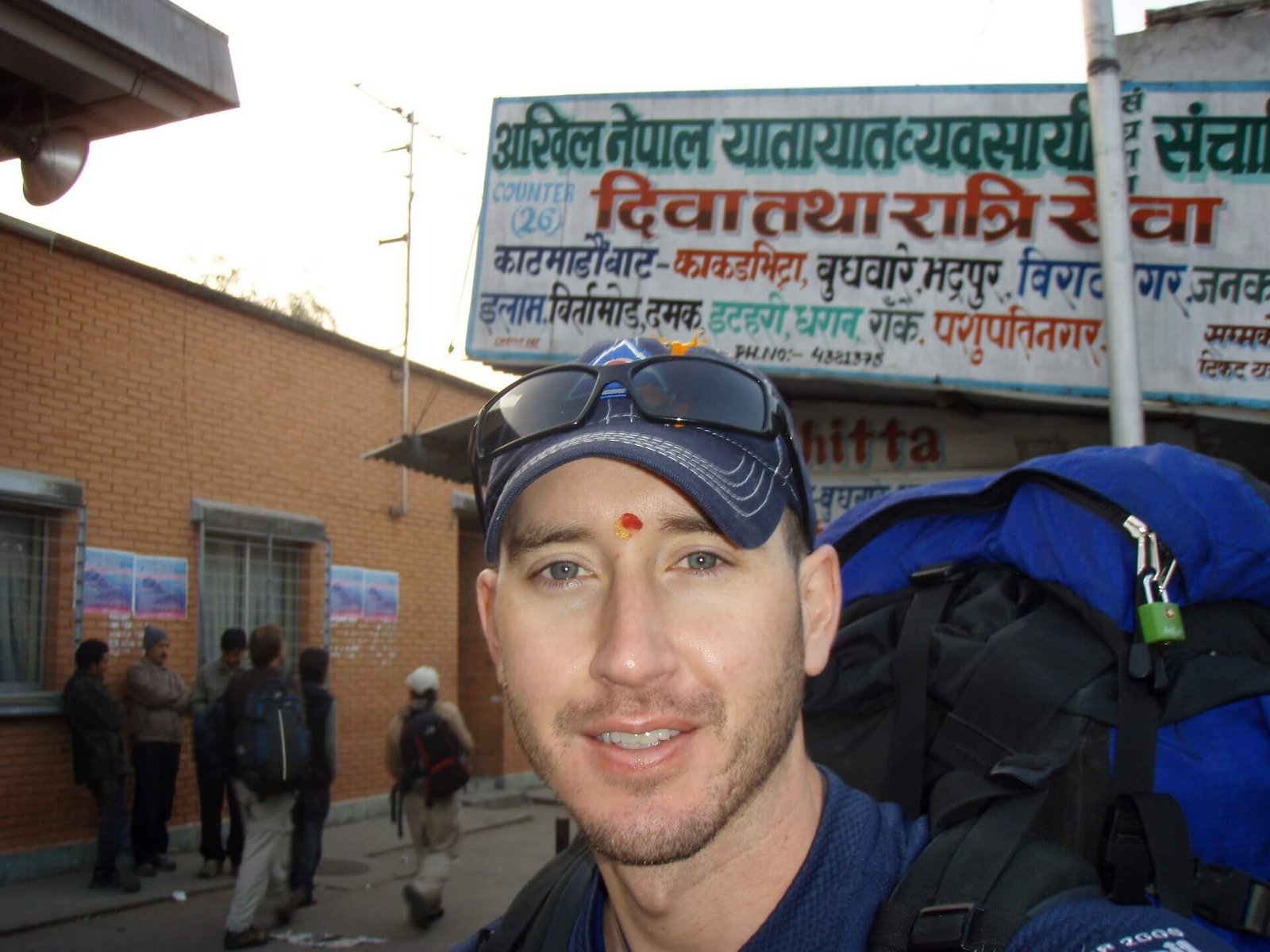
🛻 Road Modernization: Blessing or Curse?
New roads now run deeper into the region—especially after Thorong La. That means more options for jeep ride-outs to Pokhara or Jomsom, often even before the trek ends. It’s a relief for tired legs but can cut short some of the trail’s remote charm. If you want that “wild” feel, explore alternative routes like the NATT (New Annapurna Trekking Trails) which bypass paved stretches.
🏔️ Getting to Everest Base Camp
Flying into the Everest region isn’t just the fastest way to start your trek — it’s an adventure in itself. Most treks begin with the heart-pounding flight from Kathmandu or Ramechhap to Lukla, a tiny mountaintop airstrip perched at 2,860 m. From there, the trail climbs steadily toward Namche Bazaar and beyond, following a linear path up and back.
✈️ The Lukla Flight Experience
Small planes, mountain weather, and one of the world’s “most extreme airports” make the Lukla flight legendary. If weather’s bad, expect delays — sometimes for days. Many trekkers now bus to Ramechhap (about 4–6 hours from Kathmandu) for a more reliable flight.
🛻 No Road Access = Total Commitment
Unlike the Annapurna Circuit, there’s no road bailout mid-trek. Once you’re on trail, you’re committed — evacuation requires footpower, helicopter, or a lot of luck. That’s why acclimatization, pacing, and planning are extra critical on EBC.
🏙️ Kathmandu to the Trailhead
Treks typically start with a night or two in Kathmandu to gather permits, gear, and guides. From there:
- Bus/van to Ramechhap (peak season only)
- Domestic flight to Lukla
- Trek begins immediately from the airstrip
🪪 Permits & Entry Rules
Nepal’s trekking system runs on permits — not just for trail maintenance, but to regulate safety and support local economies. Whether you’re heading to the Annapurna region or up toward Everest, you’ll need to budget for the paperwork and know where to get it. Here’s what’s required for each trek, plus the latest rules on guides and solo hiking.
🌀 Annapurna Circuit Permits
You’ll need two permits for the Annapurna Circuit:
- ACAP (Annapurna Conservation Area Permit): NPR 3,000 (~$22 USD)
- TIMS (Trekkers’ Information Management System): NPR 2,000 (~$15 USD)
Both permits are easily arranged through trekking agencies or at Nepal Tourism Board offices in Kathmandu or Pokhara. Most guided treks handle the paperwork for you — but if you’re booking your own guide, you can apply directly (you’ll need to show your itinerary and a valid ID).
🚫 No More Solo Trekking on Annapurna
As of April 2023, solo trekking is no longer allowed in the Annapurna region. All trekkers must now hike with a licensed guide booked through a registered agency. This change was made after a string of accidents and missing trekkers — especially in remote or shoulder-season conditions.
If you’re traveling solo, this means joining a group trek or hiring a one-on-one guide. Porters are optional but widely available if you prefer not to carry your full load.
🏔️ Everest Base Camp Permits
You’ll need two different permits for EBC — and note that TIMS is not required here:
- Khumbu Pasang Lhamu Rural Municipality Permit: NPR 2,000 (~$15 USD)
– Paid in Lukla or Monjo (not available in Kathmandu) - Sagarmatha National Park Entry Permit: NPR 3,000 (~$22 USD)
– Available in Kathmandu or at the park entrance near Monjo
Guides are still optional for EBC as of now, but strongly recommended for safety, navigation, and altitude support — especially if you’re new to high-altitude trekking or flying solo.
🧭 Guided Treks, Tour Tips & Scenic Alternatives
I knew I wanted to go guided, but in my younger years, planning wasn’t my strong suit. The strategy? Land in Kathmandu, wander Thamel, and hope for the best. It worked out… mostly.
Looking back, I salute that youthful naïveté — but age has definitely taught me a few things.
Since Nepal’s 2023 rule change, trekking with a licensed guide isn’t just smart — it’s mandatory on routes like Annapurna. So I’ve rounded up reliable tour platforms to take the guesswork (and the dice roll) out of booking.
Why go guided — even if you’re a solo hiker?
- No permit headaches or paperwork
- Guides pace altitude gain and spot warning signs
- You’ve got backup if something goes sideways
- You get local insight: culture, history, nature
- It doesn’t have to feel like a typical tour — private options give you freedom with support
Group vs. Private Treks: A quick breakdown
I actually signed up for a private trek, and so did the Australian father and son I ended up hiking with. We’d all booked through the same company, and since our routes and pacing lined up, we naturally fell into step together. For most of the circuit, we became a little trail family, sharing guides, teahouses, and trail snacks.
Eventually, they split off for the Annapurna Base Camp add-on, but for a solid stretch, our private itineraries merged. We were glad for the company — and I was especially glad their guide was way more experienced than mine.
Group treks:
- Cost-effective and sociable
- Shared guide, fixed itinerary, groups of ~4–10
Private treks:
- More expensive, but flexible
- Personalized pace, route, and itinerary
What a quality guided package should cover:
- Permits: ACAP + TIMS for Annapurna; Sagarmatha + Khumbu permits for EBC
- Teahouse lodging and meals
- Licensed guide and (optional) porter
- Transport: from Kathmandu to trailhead and return, including flights for EBC
🏔️ Annapurna Circuit – Full Experience
If you’re aiming for the classic “Around Annapurna” route — the one most locals referred to when I trekked it — look for a tour that runs at least 15 to 20 days. This gives you the full buildup to Thorong La Pass, with options to descend into Mustang or loop out through Tatopani.
I’d begin with the Annapurna Circuit category on GetYourGuide. It’s the easiest place to filter by duration, group size, and route specifics.
If I were booking today, I’d go for the 20‑Day Annapurna Circuit + Tilicho Lake Trek listed there. It covers the core circuit, adds a detour to Tilicho Lake, and ends with a flight from Jomsom to Pokhara.
That last leg? Honestly, it’s a smart move. I remember feeling quietly jealous of the trekkers who hopped that flight. With Thorong La behind us and the scenery mellowing, skipping the dusty road walk sounded better by the hour. This itinerary keeps the altitude and atmosphere — but trims the tail-end in a way I’d absolutely recommend now.
👉 Prefer to compare? Viator and Klook also list similar circuit treks — worth browsing if you’re checking different platforms or hunting for discounts.
🏔️ Annapurna Base Camp & Poon Hill – Shorter Options
Not everyone has the time (or the knees) for a full-circuit trek. That’s where Annapurna Base Camp and Poon Hill come in — shorter, lower-altitude routes with big views and easier logistics out of Pokhara.
I didn’t hike to Annapurna Base Camp, but I did pass through Poon Hill — one of the few overlap points with the longer loop.
That sunrise stuck with me: everyone bundled up, cameras ready, shoulder to shoulder as the first light hit the peaks. After 15 days of quiet trail rhythm, Poon Hill felt like rejoining the wider world — and that shift dulled the magic a bit. The crowds, the chatter, the fresh faces from Pokhara made it feel less personal than the rest of the trek.
Still, if I hadn’t just spent two weeks deep in the Himalayas? This might’ve been the highlight. The views absolutely deliver. And if you’re short on time, budget, or fitness, Poon Hill delivers on that unforgettable “top of the world” moment.
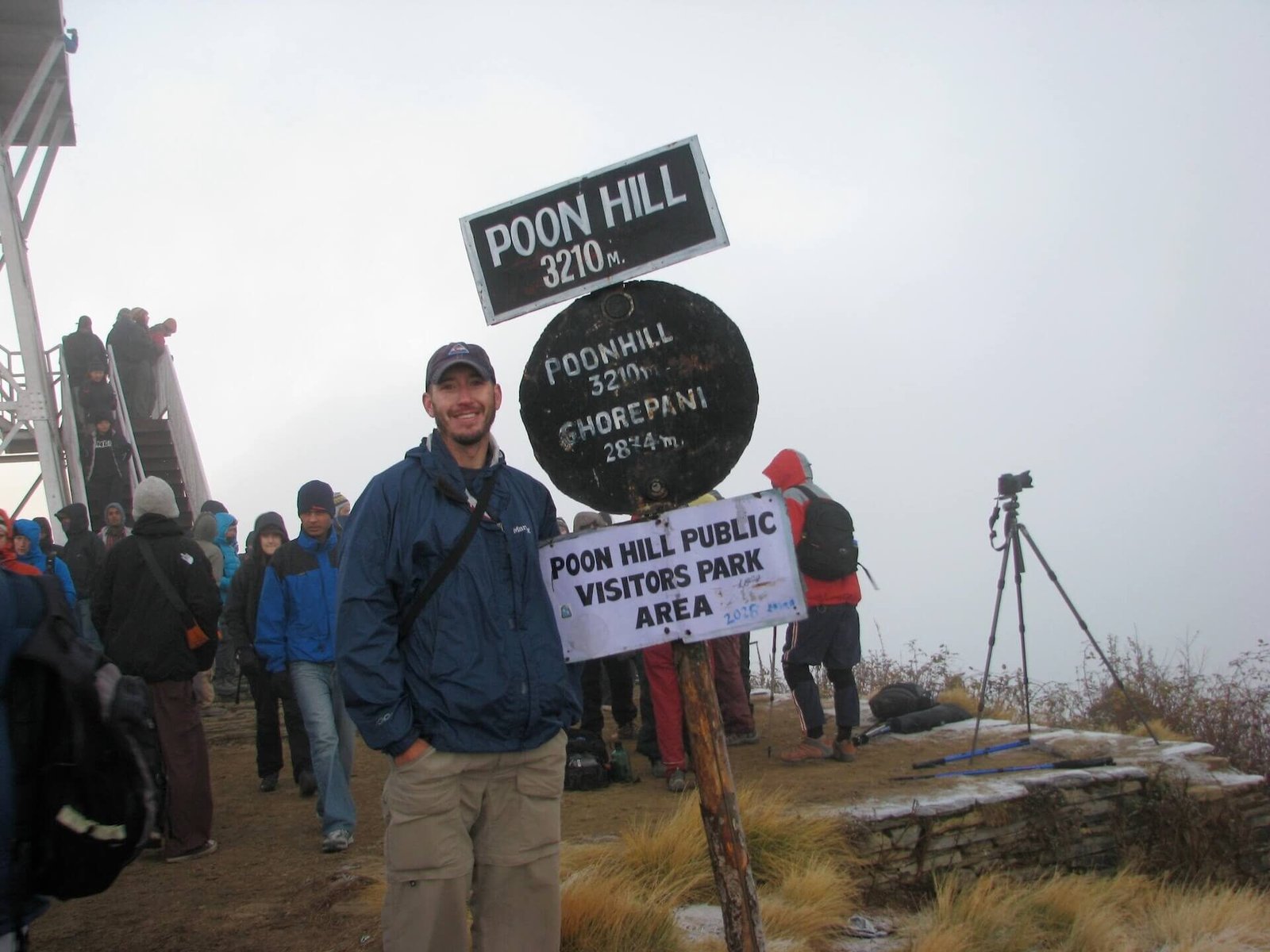
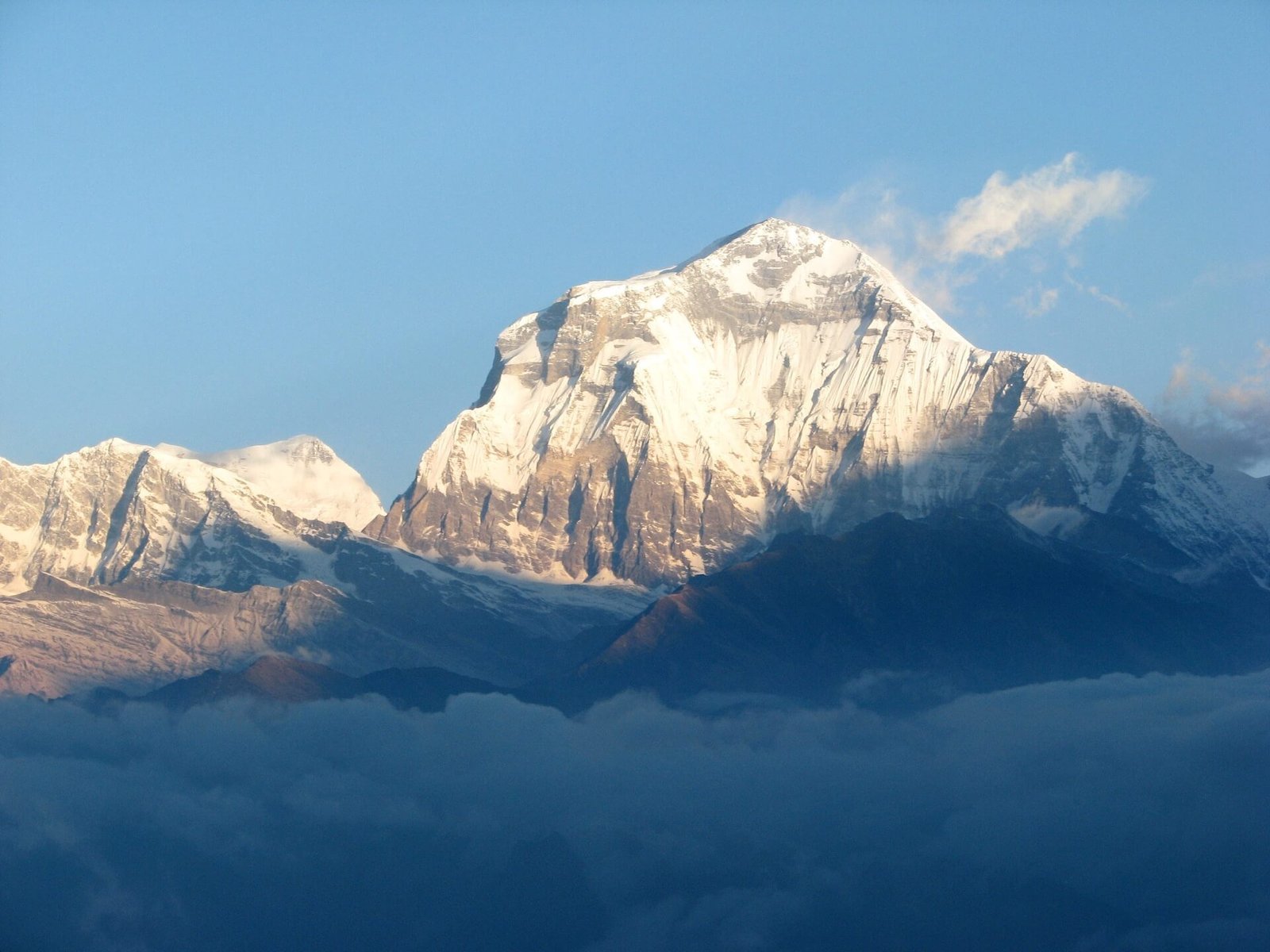
Check out this Annapurna Base Camp & Poon Hill page on GetYourGuide — most tours run 6–12 days, start from Pokhara, and range from ABC-only to combo routes. You’ll trade the high passes for a mellower pace, but still get plenty of big-mountain payoff and classic teahouse culture.
👉 Also available on Viator and Klook if you’re browsing for better dates or different inclusions.
🏔️ Everest Base Camp – Classic Route
If you’re chasing that iconic Everest moment—standing at Base Camp or witnessing sunrise on Kala Patthar—you’ll want a 12–15 day itinerary that starts with a flight to Lukla and returns via Namche Bazaar or Lukla.
Start with the Everest Base Camp category on GetYourGuide, which includes classic treks, heli-assisted returns, and scenic flight tours—ideal if you’re still deciding how much trail versus flight time you want.
👉 Viator and Klook also offer a variety of EBC trekking options—worth checking out for alternate providers or better availability.
🧭 Scenic Alternatives – Other Routes Worth a Look
Not every trekker comes to Nepal for Everest or Annapurna alone. If you’re craving something quieter, faster, or just a little different, there are plenty of lesser-known routes that still deliver big mountain drama.
- Mardi Himal: A rising favorite from Pokhara—fewer crowds, dramatic ridgeline views, and a punchy 5–7-day itinerary. Treks available via GetYourGuide, Viator, and Klook.
- Gokyo Lakes: A scenic extension off the Everest Base Camp trail, featuring turquoise glacial lakes and sweeping summit views from Gokyo Ri—off the beaten path compared to the standard EBC route.
- Everest Helicopter Tours: Perfect if you’re short on time or want the Everest view without the trekking. These tours often include a fly-by of Base Camp and even a stop at Everest View Hotel—stunning landscapes without the foot blisters.
Not sure which trek suits you best? The options below update automatically based on what’s popular right now—from full Himalayan adventures to shorter scenic routes—a smart place to start if you’re still browsing.
🧭 Which Trek Is Better for You?
Still torn between the Annapurna Circuit and Everest Base Camp? You’re not alone. Each trek has its own rhythm, vibe, and challenges — and the right pick depends more on your goals and personality than the map.
Here’s a quick cheat‑sheet to help you decide:
🌀 Choose the Annapurna Circuit if…
- You want changing scenery every single day
- Lush rice terraces, pine forests, and high‑altitude deserts — this trek feels like a full journey, not just a single goal.
- You prefer a loop over an out‑and‑back
- No retracing steps. It’s a true circuit, with new villages and views unfolding until the end.
- You care about culture as much as altitude
- You’ll move from Hindu lowlands to Tibetan‑style highlands, passing through working villages that feel alive — not just set dressing.
- You’ve got 2–3 weeks and want depth over speed
- This trek takes time, but pays off in immersion, independence, and variety.
- You want a physical challenge without sprinting
- Altitude gain is gradual, letting you find your rhythm rather than rush to a summit.
🏔 Choose Everest Base Camp if…
- You’re short on time and want a clear target
- A classic 12–14‑day itinerary leads straight to Base Camp — and Kala Patthar if you’re up for it.
- You want Everest — period
- If standing on Everest’s doorstep is the dream, this is your trek. No substitutes.
- You’re into alpine drama from day one
- It’s steep, fast, and starts with glaciers, snowfields, and suspension bridges — no warm‑up needed.
- You don’t mind doubling back
- The out‑and‑back format means repeating your path, which some see as a drawback and others as extra trail time.
- You thrive in a social environment
- EBC is lively — packed teahouses, global trekkers, and the occasional rescue helicopter add to the buzz.
Still undecided? Either trek is incredible — just choose based on your style, schedule, and what you want to get out of the experience.
🙋 Why I Chose Annapurna Circuit
As strange as it sounds, that old Annapurna poster from my flat in New Zealand stuck with me long after I moved on. I’m wired that way — Machu Picchu made my bucket‑list thanks to The Simpsons, and I got curious about Myanmar after seeing J. Peterman vanish into Burma on Seinfeld. I’m a simple guy: plant a seed, and eventually I’ve got to go see it for myself.
But Nepal wasn’t just a whim. I’d just finished my first year teaching in South Korea and wanted one big adventure before heading home. I wanted something epic; something more than a notch on the belt. Ironically, that trek only deepened my wanderlust, and I ended up moving back to Korea indefinitely to keep chasing the Asia travel bug.
So why the Annapurna Circuit over Everest Base Camp? A few reasons:
- Colorado hiker logic:
- I wasn’t content with an out‑and‑back after years of hiking 14‑ers in the Gore Range. I wanted a true circuit: new terrain, villages, and surprises every day.
- Altitude cred with a twist:
- Sure, I wanted bragging rights — and Thorong La Pass (5,416 m) delivered. But I didn’t need the Everest buzz. And FYI, Thorong La is actually higher than Base Camp (5,364 m).
- Crowds, hype, and Everest overload:
- I’d heard EBC could feel like a conga line — busy trails, packed teahouses, and overt “Everest” branding. Annapurna wasn’t untouched, but it felt more grounded. Maybe I’d just seen too many documentaries where overcrowding is the villain.
- Bigger picture, not just one peak:
- I wasn’t after Everest alone. I wanted the full sweep: Annapurna I–IV, Dhaulagiri, Machhapuchhre, Gangapurna. The Circuit gave me that panorama.
- Call it timing, karma, or just Kathmandu magic:
- I wandered into a travel office in Thamel, said I wanted to trek, and that was it. They paired me with Prakash, a great guide, and an Aussie father‑son team. No pressure, no hard sell — just the easy momentum Nepal’s known for. By morning, I was on a bus out of the city.
🌤️ Best Time to Trek – Seasonal Breakdown
Choosing when to go can matter just as much as where. Here’s a no-fluff breakdown of what each season brings on both the Annapurna Circuit and Everest Base Camp trails.
🌸 Spring (March–May)
Why it rocks: Mild daytime temps, clear skies, and rhododendron blooms. Excellent visibility and stable trail conditions.
What to expect: High season, especially busy on Everest. Teahouses fill up fast, so booking early is wise.
Ideal for: Dramatic mountain views, moderate weather, and vibrant trail culture.
🍁 Autumn (September–November)
Why it shines: Post-monsoon skies deliver crystal-clear mountain vistas. Cool but comfortable temps with dry trails.
What to expect: Nepal’s busiest trekking season—expect crowds balanced with reliable services. I trekked Annapurna Circuit then: consistent clear skies, occasional warm afternoons, and just enough snow on Thorong La for a thrilling summit.
Ideal for: Photographers, first-time trekkers, and postcard-perfect landscape seekers.
🌧 Monsoon / Summer (June–August)
Trail vibes: Expect daily rain, muddy trails, and occasional landslides—more so on Annapurna’s lower sections. Everest routes are somewhat sheltered, but Lukla flights face frequent delays.
Who it suits: Adventure-seekers eyeing solitude, or trekkers targeting rain-shadow zones like Mustang.
Heads-up: Not beginner-friendly; be ready for wet gear, leeches, and on-the-fly changes.
❄️ Shoulder & Off-Seasons
Late winter (Feb–early March): Colder nights and fewer trekkers, but good visibility if you dress warmly.
Early winter (Dec–Jan): Trails stay open, though high passes may close. Nights are extremely cold, and some teahouses shut their doors.
Who it suits: Experienced trekkers after quiet trails, lower costs, and a frosty challenge.
🗓️ Seasonal Summary Table
| Season | Months | Pros | Cons |
|---|---|---|---|
| Spring | March–May | Mild temps, rhododendron blooms, stable weather, great views | High season, popular routes can get crowded |
| Monsoon | June–August | Lush scenery, quiet trails, good for rain-shadow regions | Heavy rain, muddy trails, risk of landslides and delays |
| Autumn | September–November | Clear skies, dry trails, best visibility — a favorite season for many | Busiest time of year, early bookings needed |
| Winter | December–February | Quiet trails, crisp views, lower prices | Very cold, snow closures on high passes |
Bottom line: If you’re after clear skies and stable trails, spring and autumn are your best bet. But if you’ve got the gear and mindset for off-season trekking, Nepal rewards the bold.
🎒 Essential Trekking Gear: Annapurna + Everest
Whether you’re circling the Annapurnas or heading for Everest Base Camp, the basics are the same: stay warm, dry, supported, and hydrated. Depending on your own personal gear arsenal, these are some things to add to your checklist.
Footwear & Socks
- Waterproof, broken-in hiking boots (your most important gear by far)
- Lightweight shoes or sandals for evenings at the teahouse
- Quality hiking socks — consider liners for blister prevention
Clothing Layers
- Moisture-wicking base layers (top and bottom)
- Insulating mid-layer (fleece or lightweight puffy)
- Waterproof outer shell — jacket and pants
- Warm down or synthetic jacket (especially for early mornings and high passes)
- Accessories: beanie, sun hat, light gloves, warm gloves, buff or gaiter
Essentials & Trekking Gear
- Trekking poles — save your knees on long downhills
- Headlamp with extra batteries — key for early starts
- Daypack (30–50 L) for daily use
- Duffel or large pack for porter if using one
- Water bottles or hydration bladder + water purification (tabs or filter)
- -10°C sleeping bag — especially important for Thorong La or cold nights in Gorak Shep
- First-aid basics: blister pads, anti-diarrheals, pain relievers, altitude meds if needed
- Toiletries: sunscreen, lip balm, toothbrush, biodegradable soap, etc.
- Tech: power bank, universal plug adapter, phone/camera, extra batteries
You can buy or rent nearly everything you need in Kathmandu or Pokhara — and yes, you’ll see plenty of high-end “brand name” gear at suspiciously low prices. Just know most of it is knock-off quality: good enough for a single trek, but not built to last. If you’re just passing through, it’ll probably get the job done.
🧭 Don’t Trek the Himalayas Without Insurance
Trekking the Annapurna Circuit or Everest Base Camp is an adventure of a lifetime — but the mountains of Nepal are remote, unpredictable, and physically demanding. From altitude sickness to sprains or weather delays, even experienced hikers aren’t immune to the risks.
I’ll be traveling with a policy from SafetyWing, a flexible travel insurance option that includes emergency medical coverage, trip delays, and evacuation — all essential for trekking deep into the Himalayas.
👉 Read the details and get a quote here
📬 Final Thoughts + What’s Next
Whichever trail you choose, you’re signing up for more than just a trek — you’re stepping into a rhythm of mountains, villages, shared meals, and subtle shifts you might not notice until you’re back home, scrolling through photos and wondering how it all went by so fast.
Still torn between Annapurna and Everest? Don’t stress — there’s no wrong choice. Just think about what matters most: variety or altitude, solitude or bucket-list status, circuit or summit.
Got questions I didn’t cover? Drop them in the comments or shoot me a message. And if you’ve done either trek — or both — I’d love to hear your take.
📌 Found this useful? Sharing or saving it helps other trekkers discover it too.
❓ Trekking in Nepal FAQs
What is the best time of year to trek the Annapurna Circuit or Everest Base Camp?
Spring (March–May) and autumn (September–November) offer the most stable weather, clear skies, and reliable trail conditions. Autumn is the busiest trekking season, while spring still has good views and slightly fewer crowds. Monsoon and winter trekking are possible but require advanced planning and gear.
How physically demanding are these treks—do I need to be extremely fit?
Both treks require good endurance and comfort with hiking 5–8 hours per day for 12–20 days. You don’t have to be an elite athlete, but training with hikes carrying a pack will help. Annapurna’s gradual ascent is kinder, while EBC’s steeper gain and higher starting altitude can feel tougher on the body.
What gear do I absolutely need to bring on a Himalayan trek?
Essentials include a dependable backpack, layered clothing for cold mornings and evenings, quality waterproof hiking boots, trekking poles, a warm sleeping bag, and sunscreen. A lightweight down jacket and crampons or microspikes are recommended for crossing high passes like Thorong La or Kala Patthar.
Do I need to hire a guide or porter for these treks?
Yes for Annapurna—as of 2023, solo trekking is no longer permitted, so hiring a licensed guide is mandatory. For Everest Base Camp, guides are optional but highly recommended for navigation, altitude support, and logistics. Porters are also available on both routes if you want to lighten your load.
How high is the altitude, and is altitude sickness a common issue?
The highest points are Thorong La Pass (5,416 m) on the Annapurna Circuit and Kala Patthar (5,545 m) on the Everest trek. Altitude sickness can affect anyone. A gradual ascent, hydration, rest days, and recognizing early symptoms like headache or nausea are key to staying safe.
What permits do I need to trek in Nepal?
For the Annapurna Circuit, you’ll need a TIMS card (Trekker’s Information Management System) and an Annapurna Conservation Area Permit (ACAP). For Everest Base Camp, the TIMS card is replaced by a Khumbu Pasang Lhamu Rural Municipality permit and a Sagarmatha National Park Permit. Most guided tours handle this paperwork for you.
How much do food and drinks cost on the trail?
Expect to pay $3–6 USD for basic meals like dal bhat, noodles, or fried rice. Prices increase with altitude. Bottled water, snacks, and treats (like coffee or chocolate) can be significantly more expensive the higher you go. Budget $25–35 USD per day for food if you’re not on a full board package.
What are teahouses like—and do I need to book in advance?
Teahouses are basic guesthouses run by locals, offering a bed, hot meals, and sometimes charging extra for hot showers or Wi-Fi. On popular routes during peak season, they can fill up quickly, so advance booking (or trekking with a guide who books ahead) is wise. Rooms are simple but cozy enough with a good sleeping bag.
🥾 More Treks in Asia Worth Exploring
Once you’ve tasted the highs (and sore legs) of trekking in Nepal, it’s hard not to start dreaming about the next trail. Here are a few other routes across Asia that left their mark on me:
- 🇰🇷 Climbing Hallasan on Jeju Island — South Korea’s highest peak delivered heat, volcanic rock, and a surprising difficult descent I won’t forget anytime soon. Read my Hallasan Hiking Guide
- 🇰🇷 Trekking & Camping in Daegwallyeong, Gangwon-do — The mainland mountains of Korea might not get as much attention, but this snowy forest escape is one of the country’s most underrated gems. Explore Daegwallyeong
- 🇻🇳 Sapa, Vietnam — A softer, more cultural kind of trekking through misty rice terraces and homestay villages in northern Vietnam. No permits or porters required. Read my Sapa Trekking Guide
Each of these treks brought something different — and if Nepal raised the bar, these helped me keep chasing that feeling across the continent.
🧭 Need Help Planning Your Next Trek?
Feeling a little overwhelmed piecing it all together — when to go, which trek to pick, where to stay, or how to link it with the rest of your Asia plans?
I’m running a free pilot program offering one-on-one planning support for curious, independent travelers heading to Nepal (and beyond). There’s no catch — just real help from someone who’s been there, minus the hard sell or tour package pressure.
Whether you’re torn between treks or figuring out how to build a bigger adventure around it, I’ll help you map it out with personalized advice and practical tools.
👉 Learn more and get free help with your Asia trek planning →
